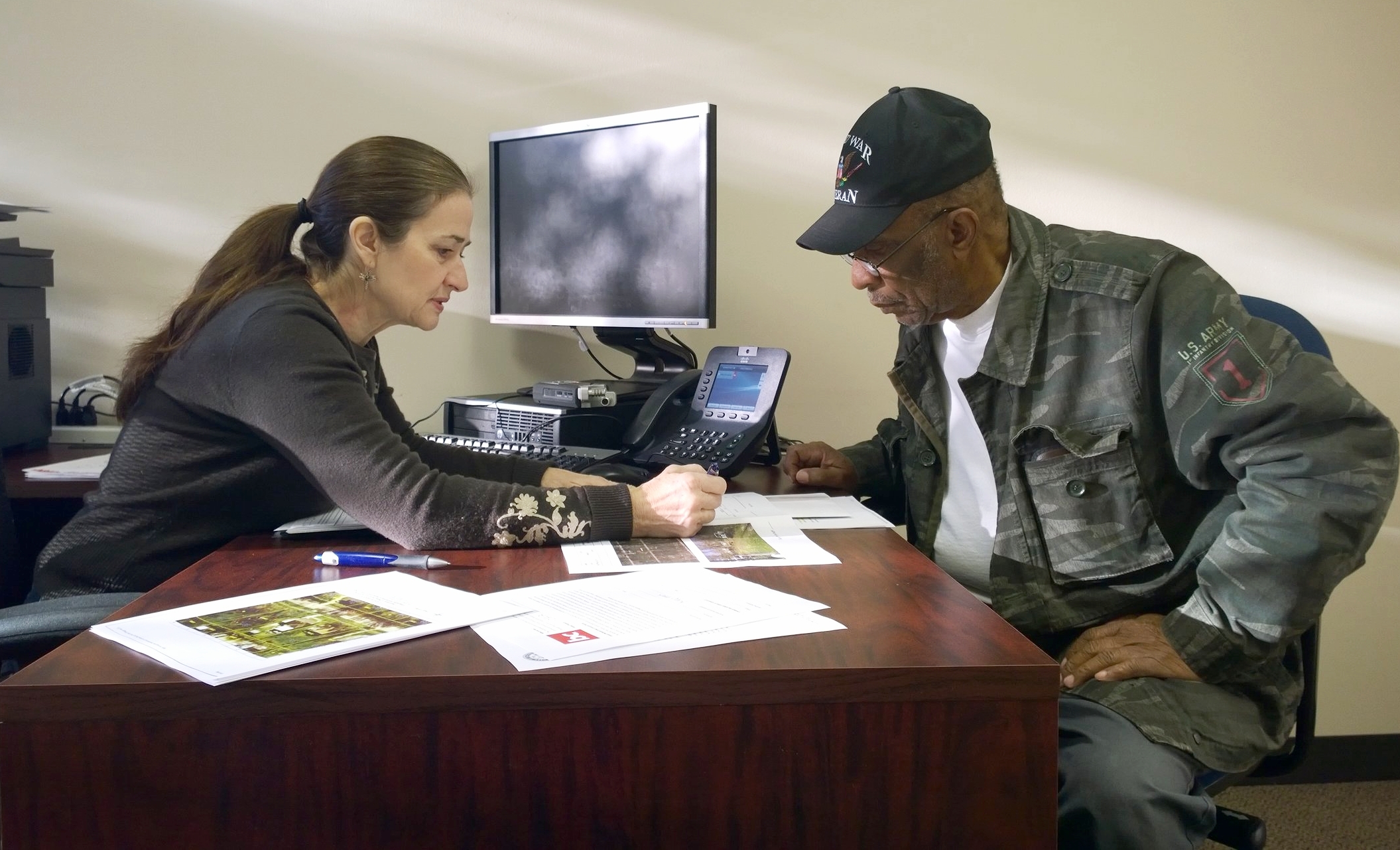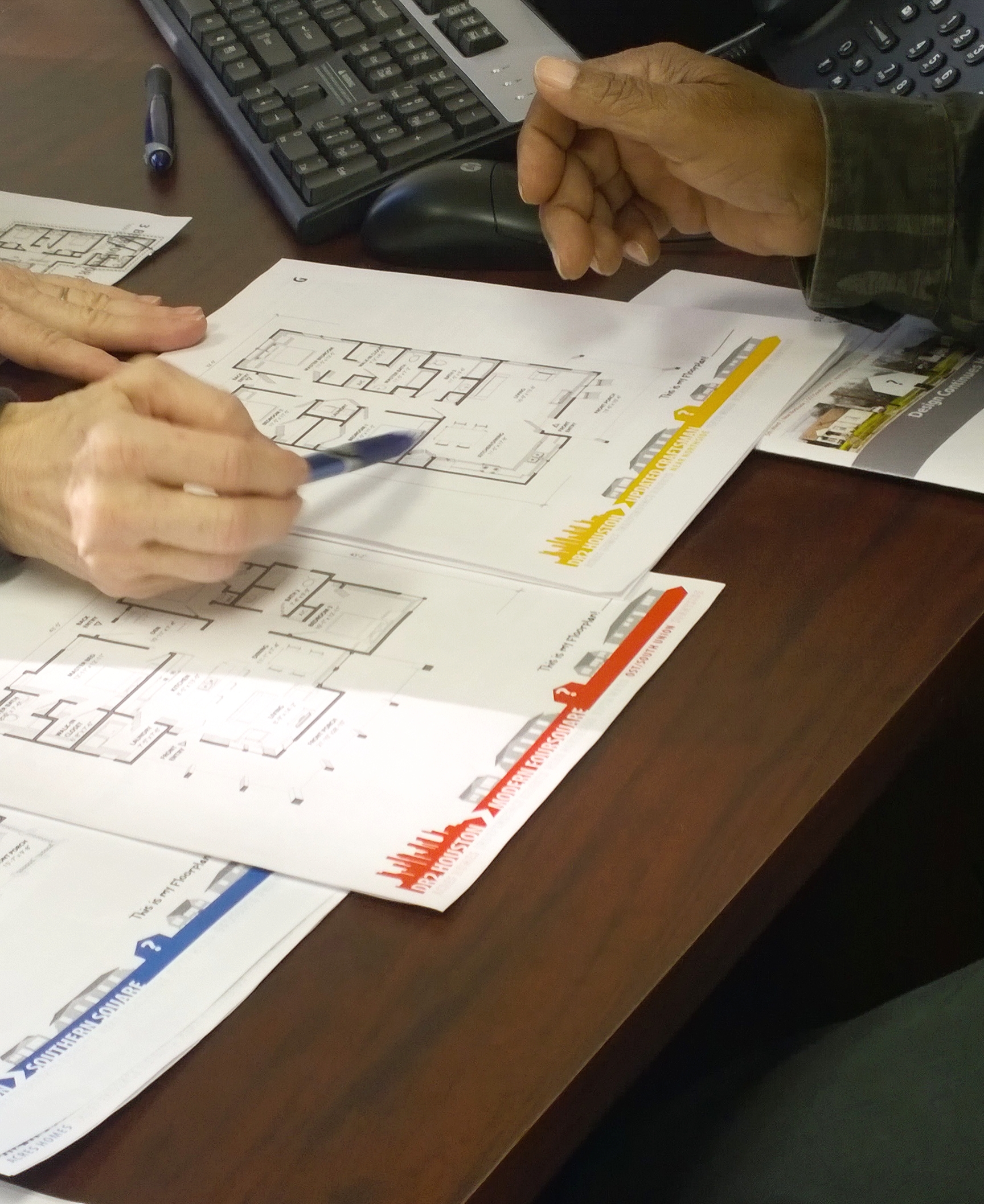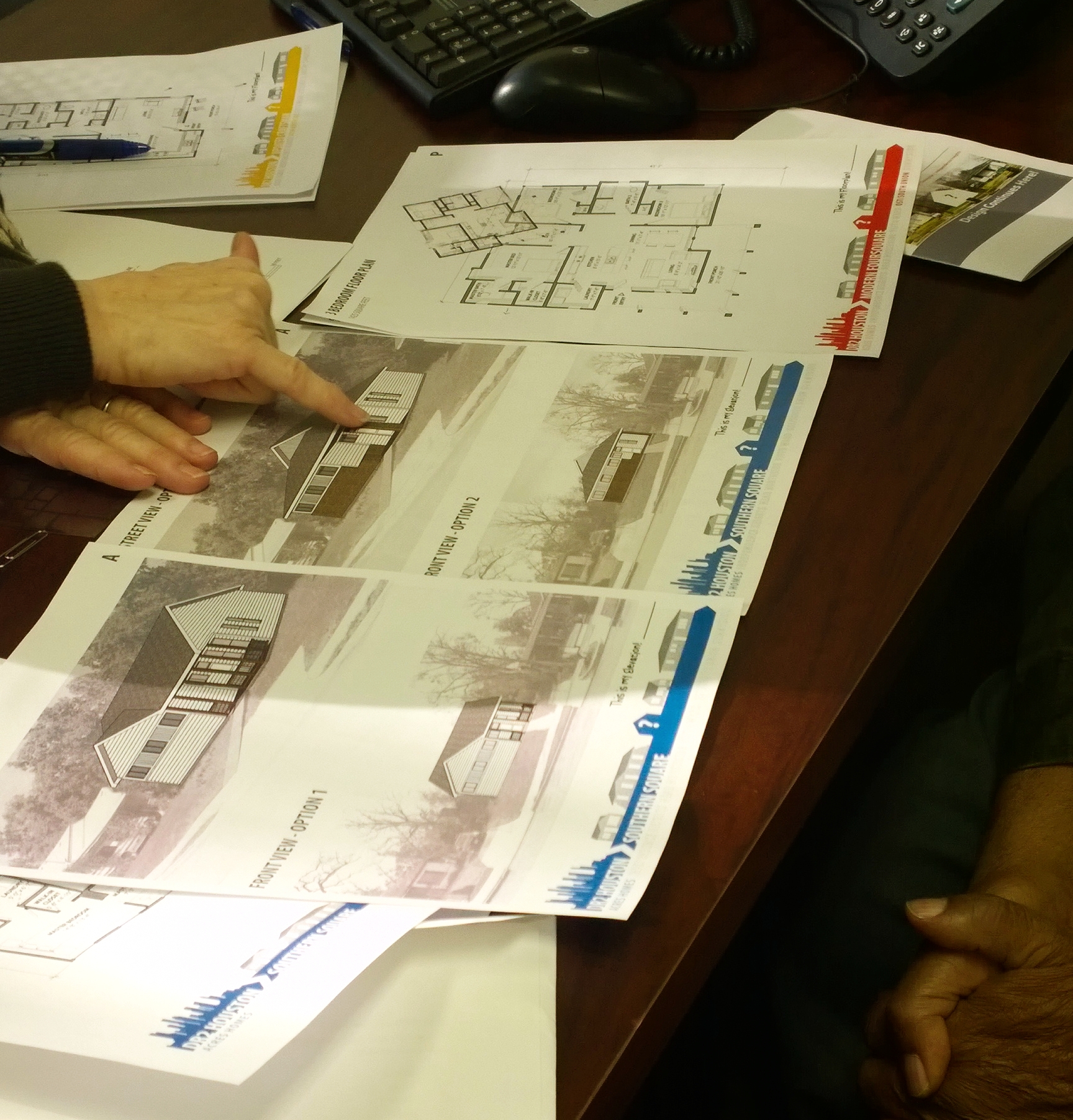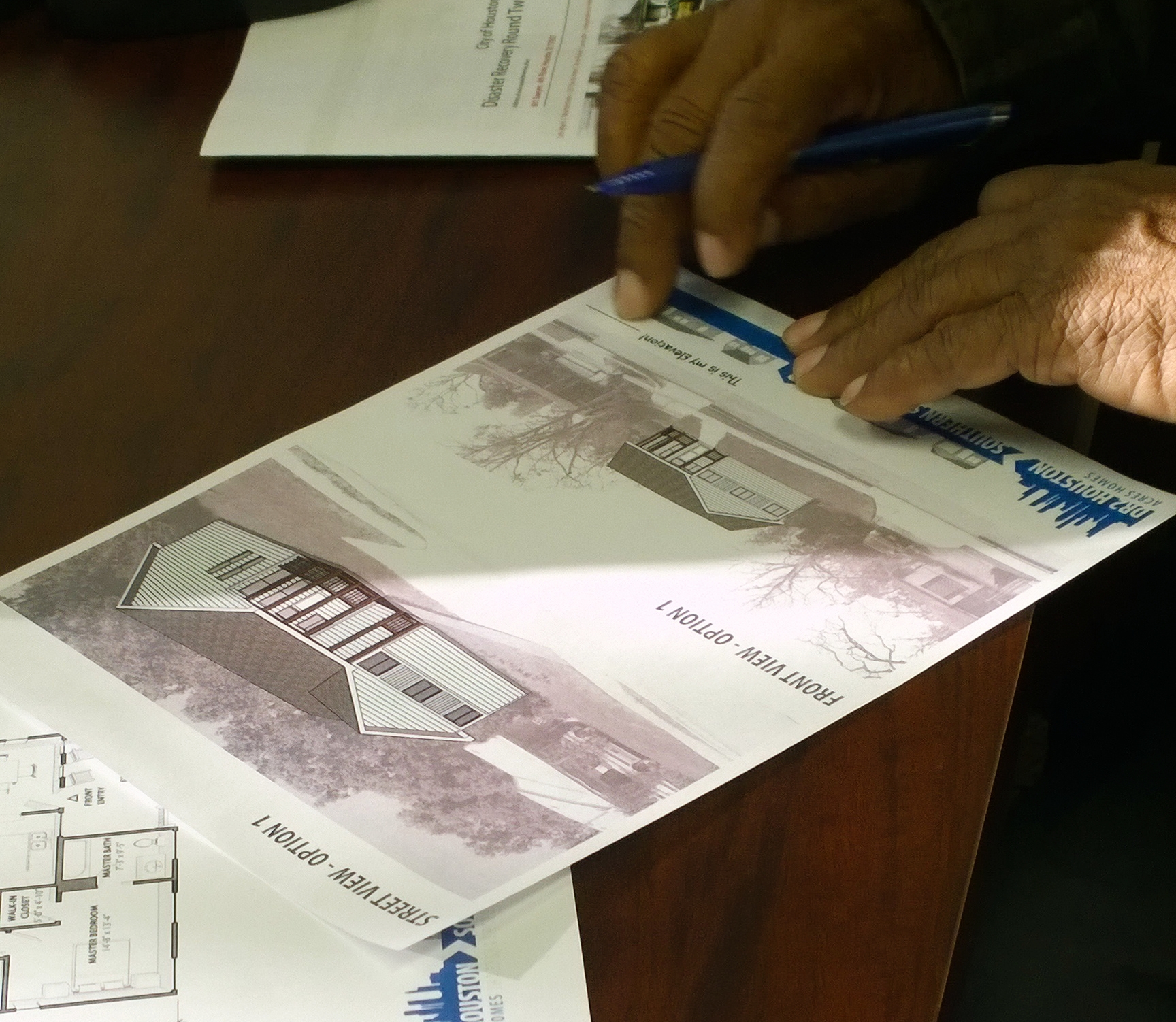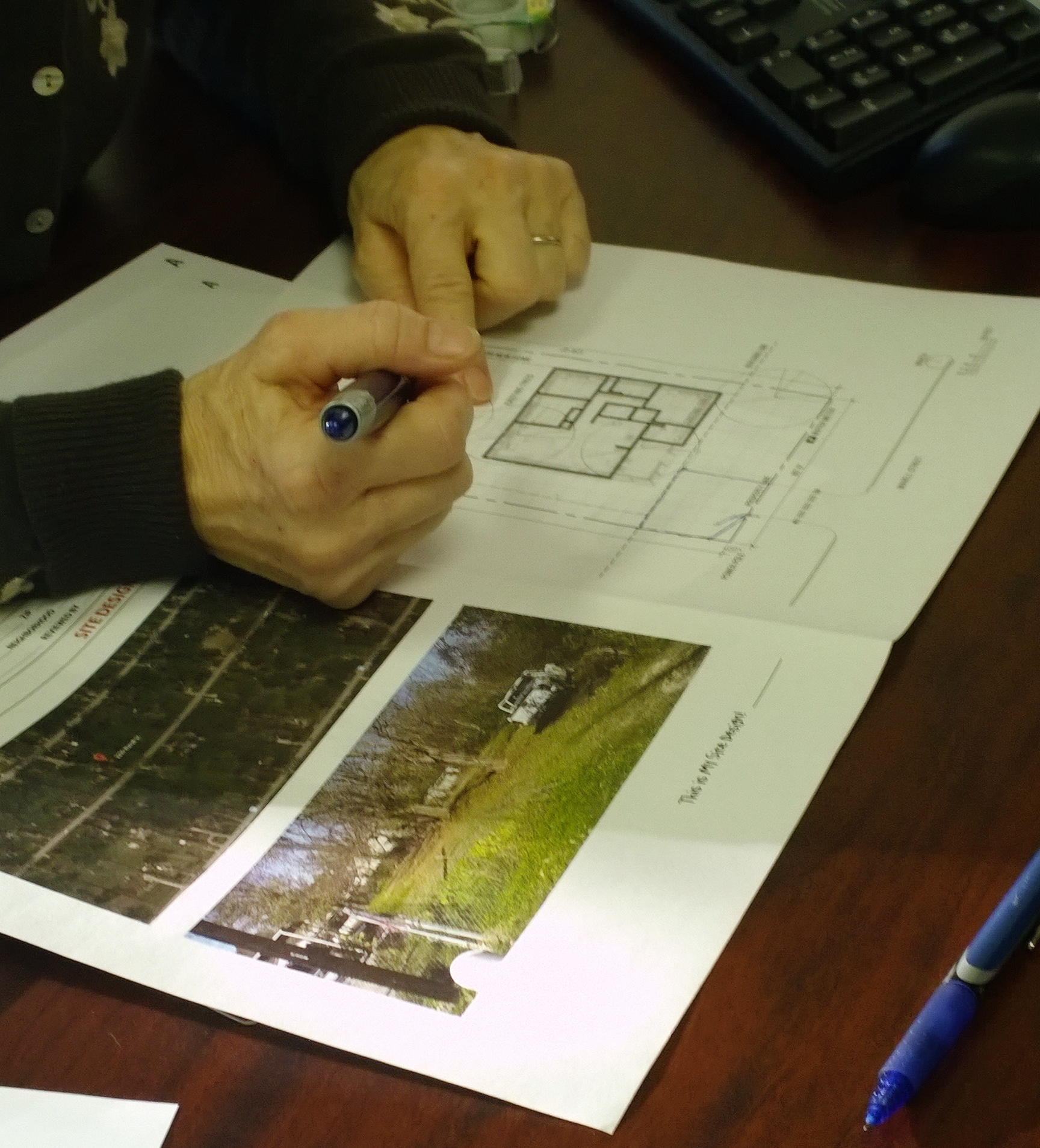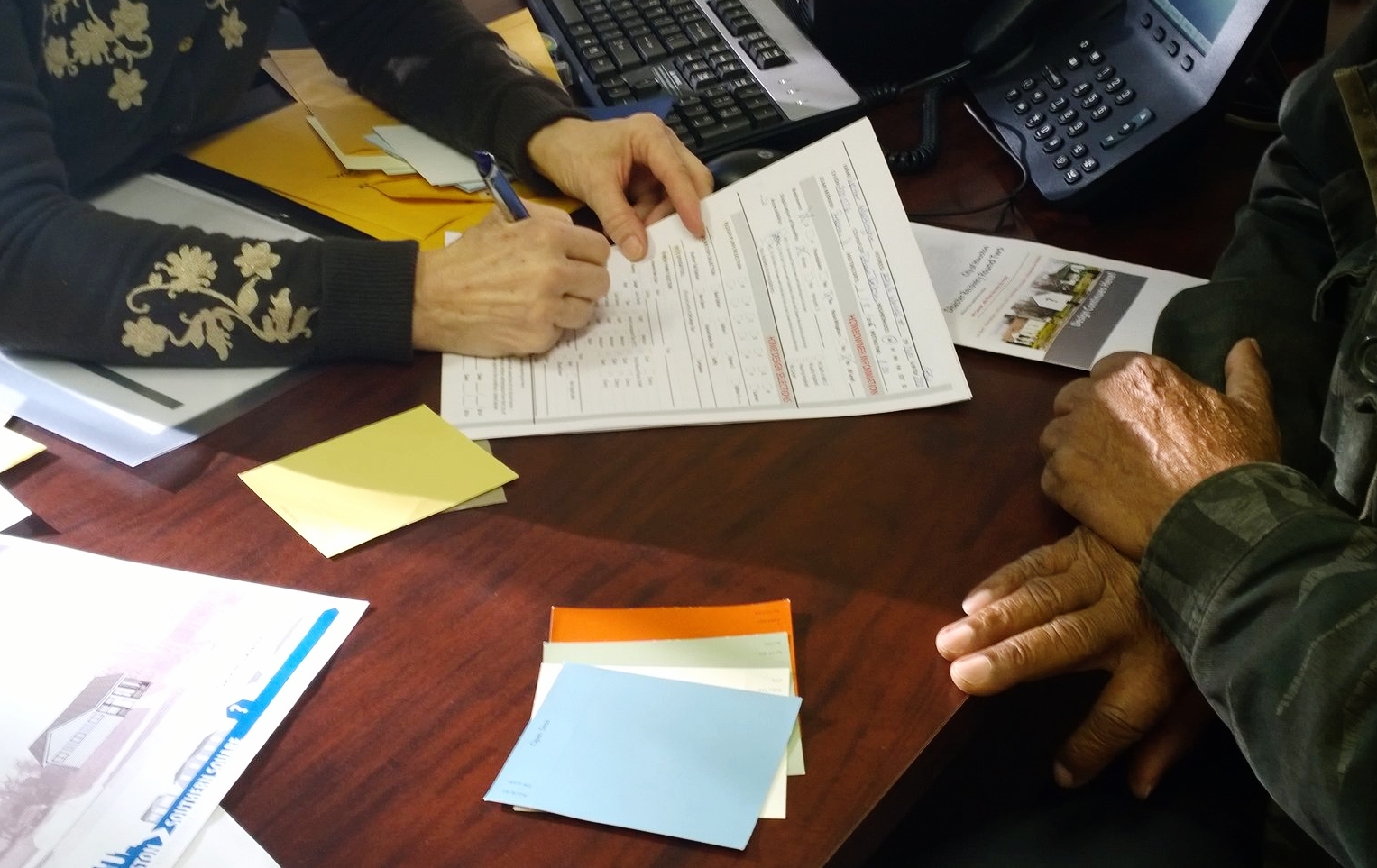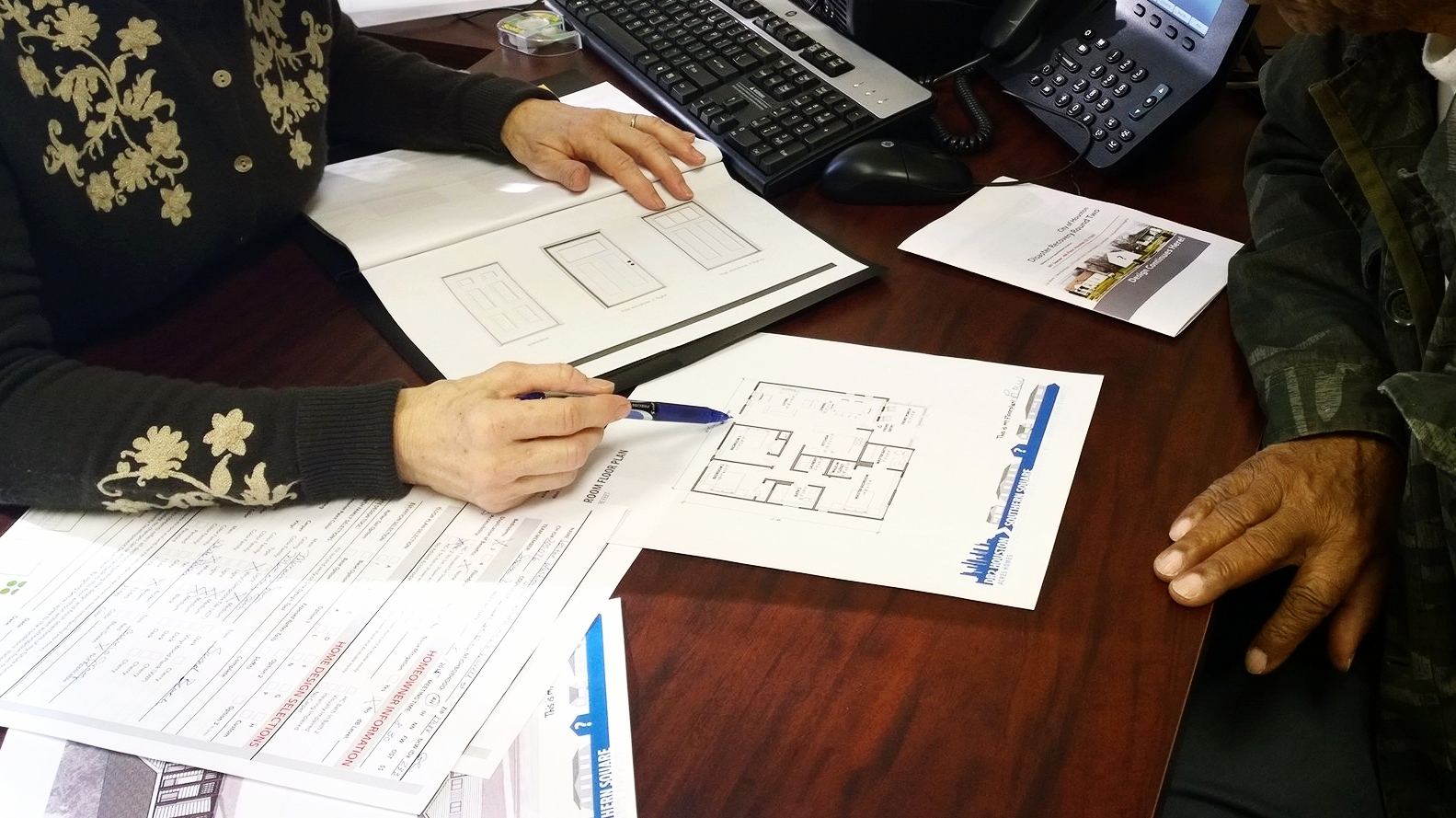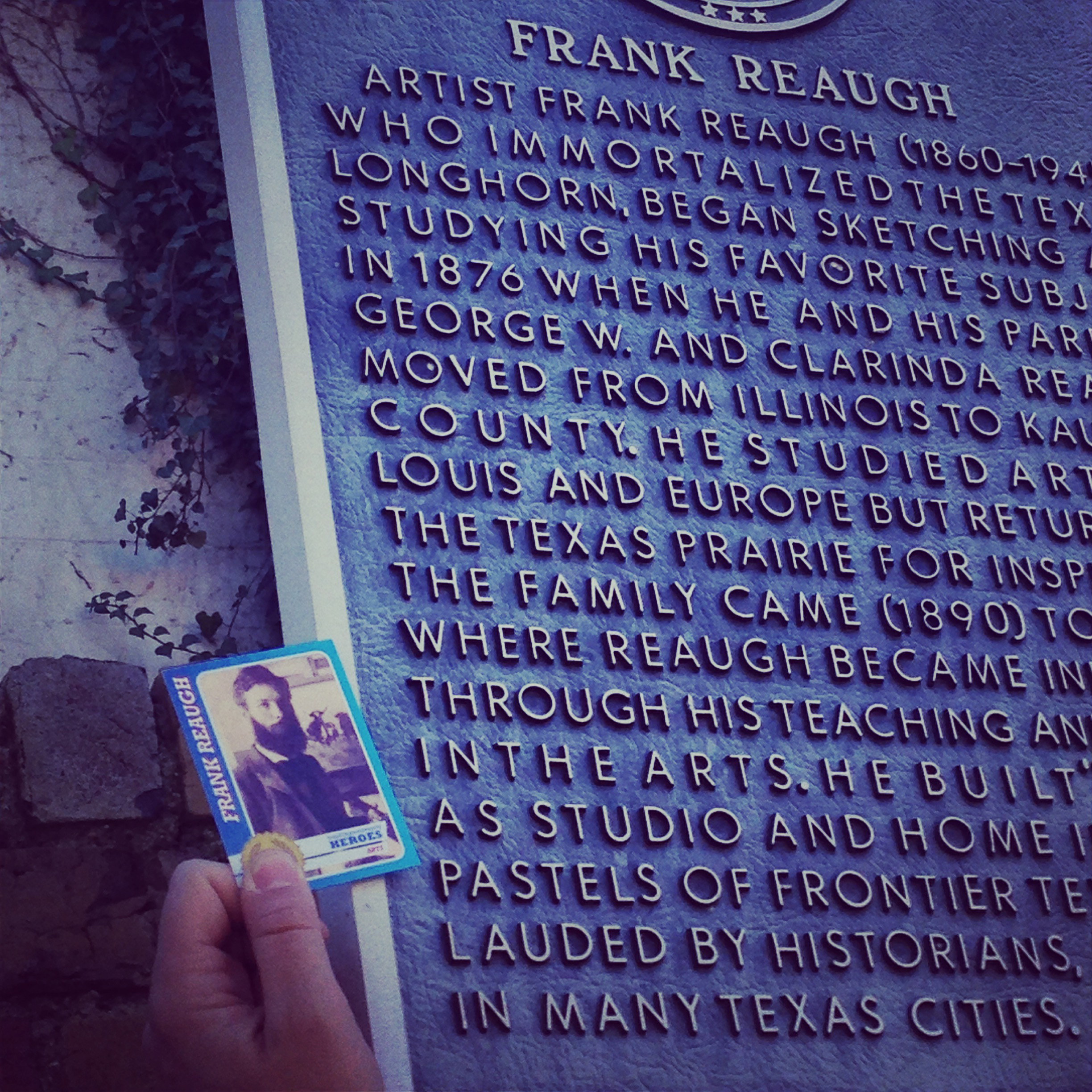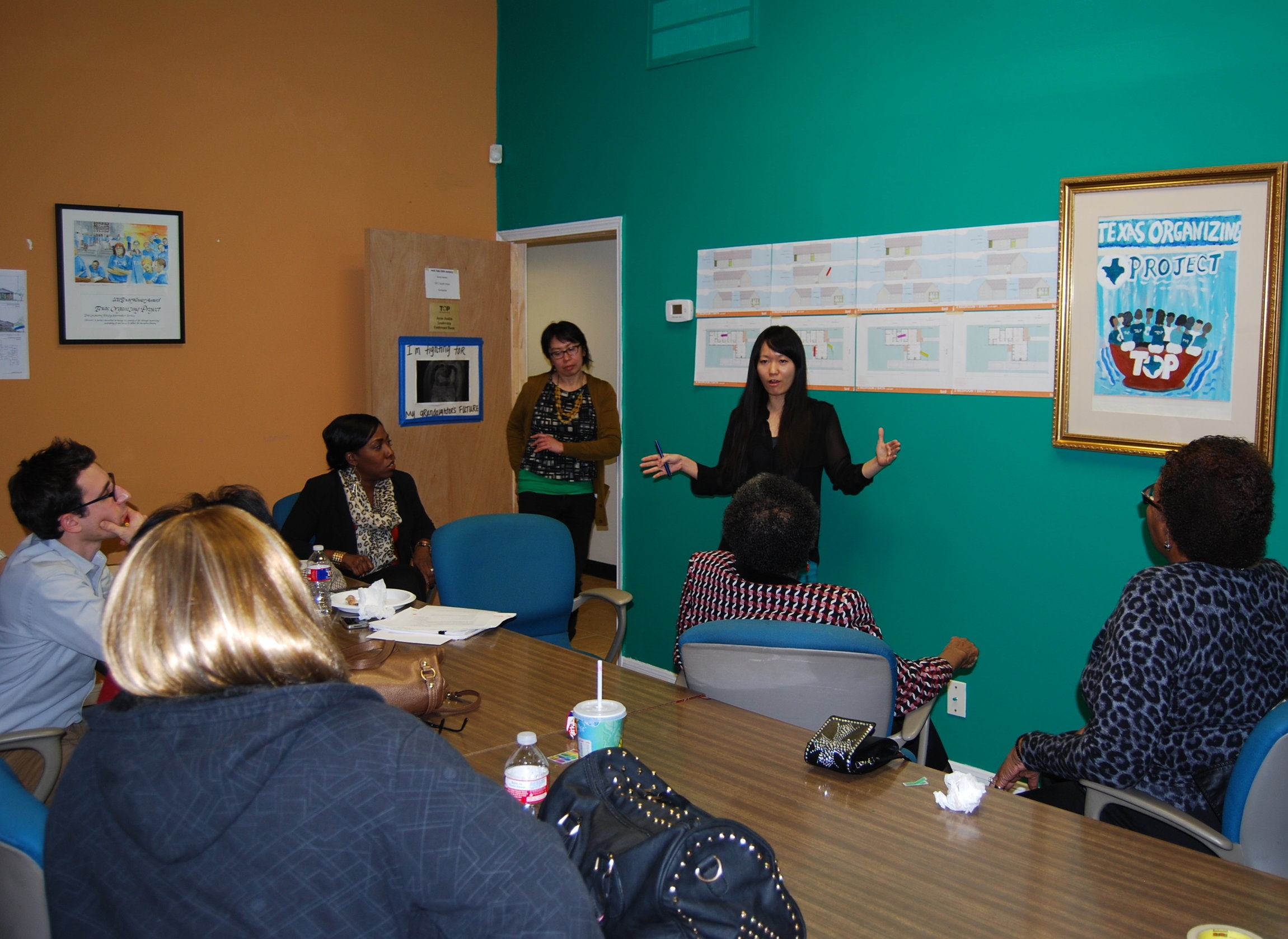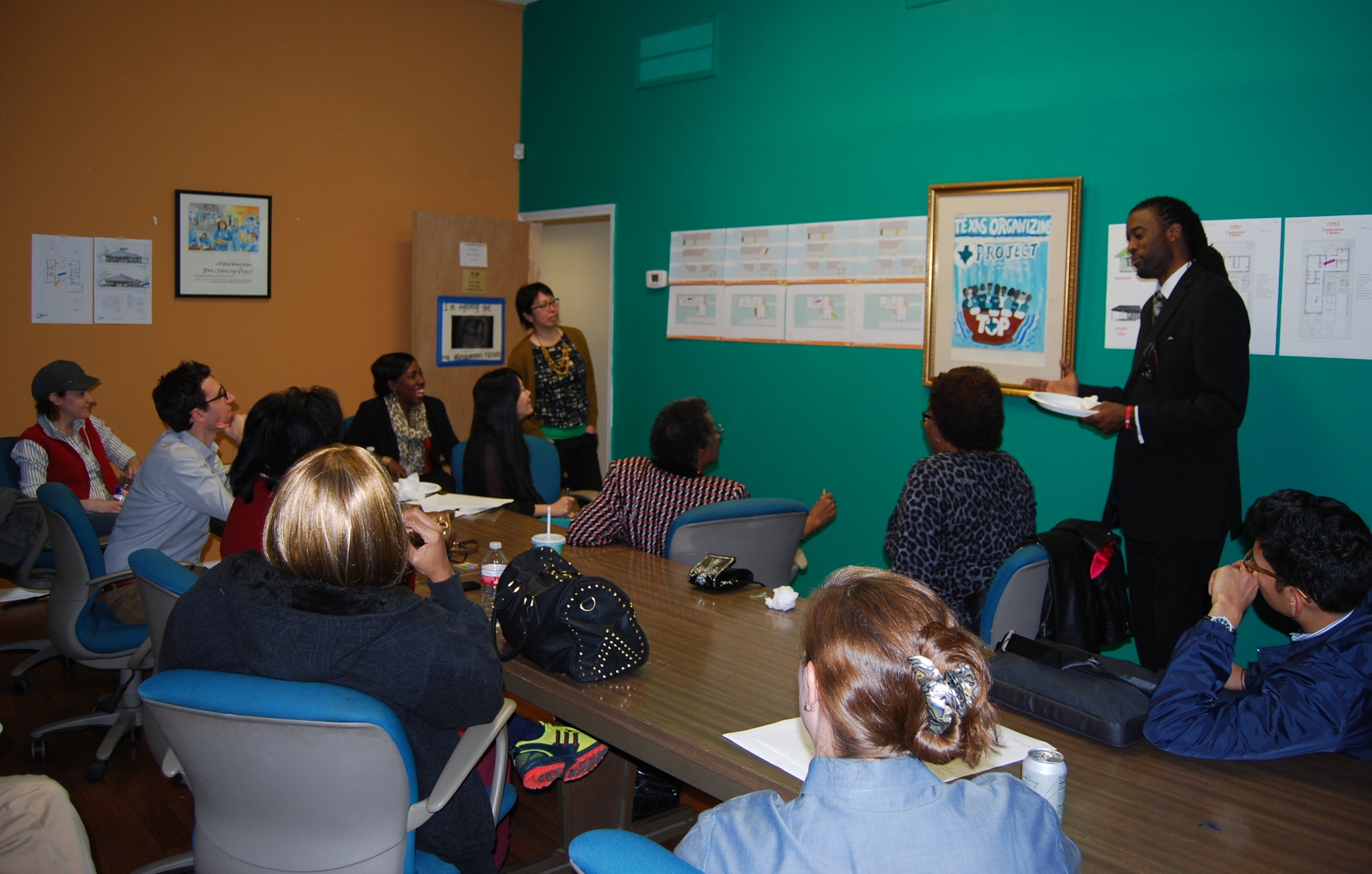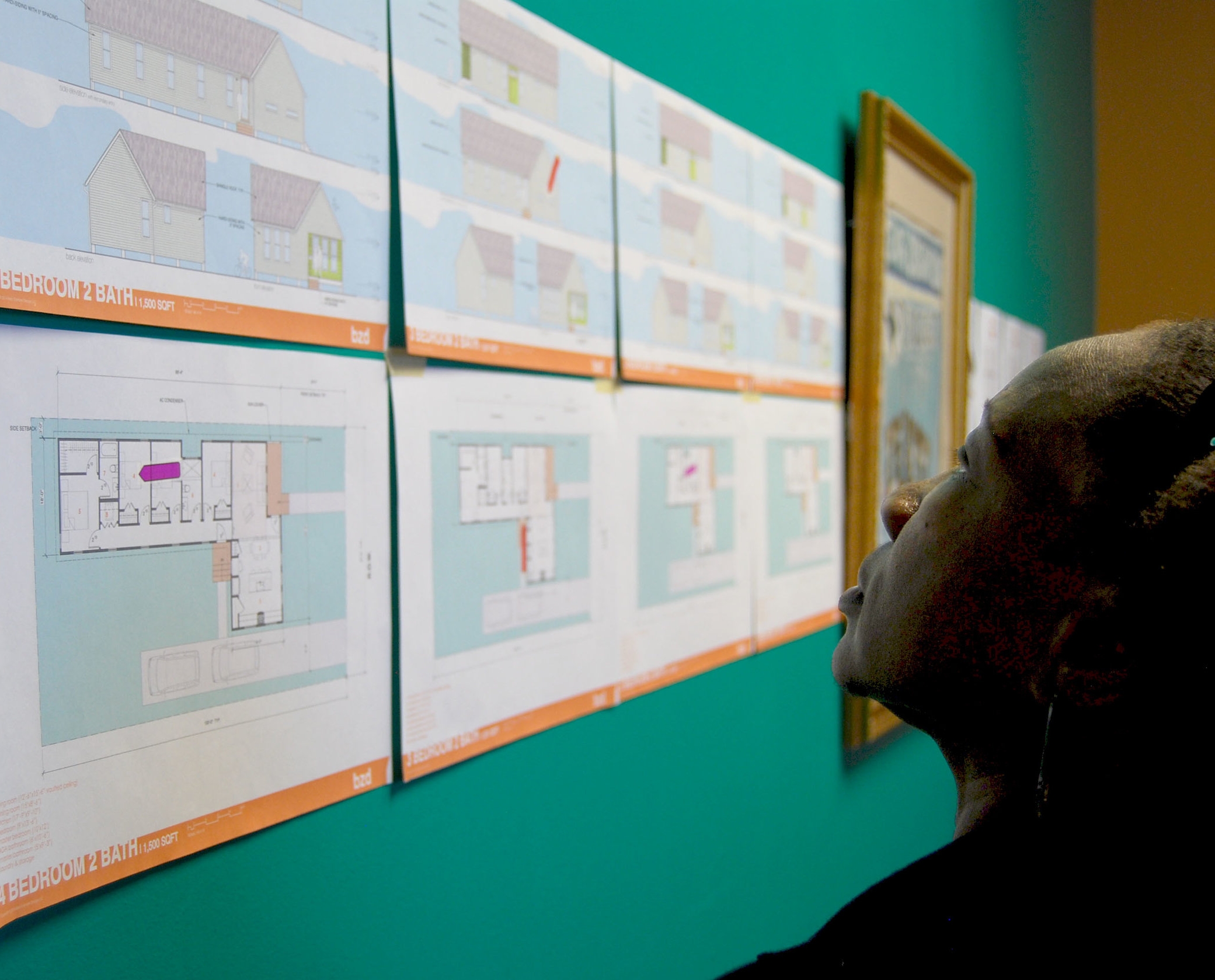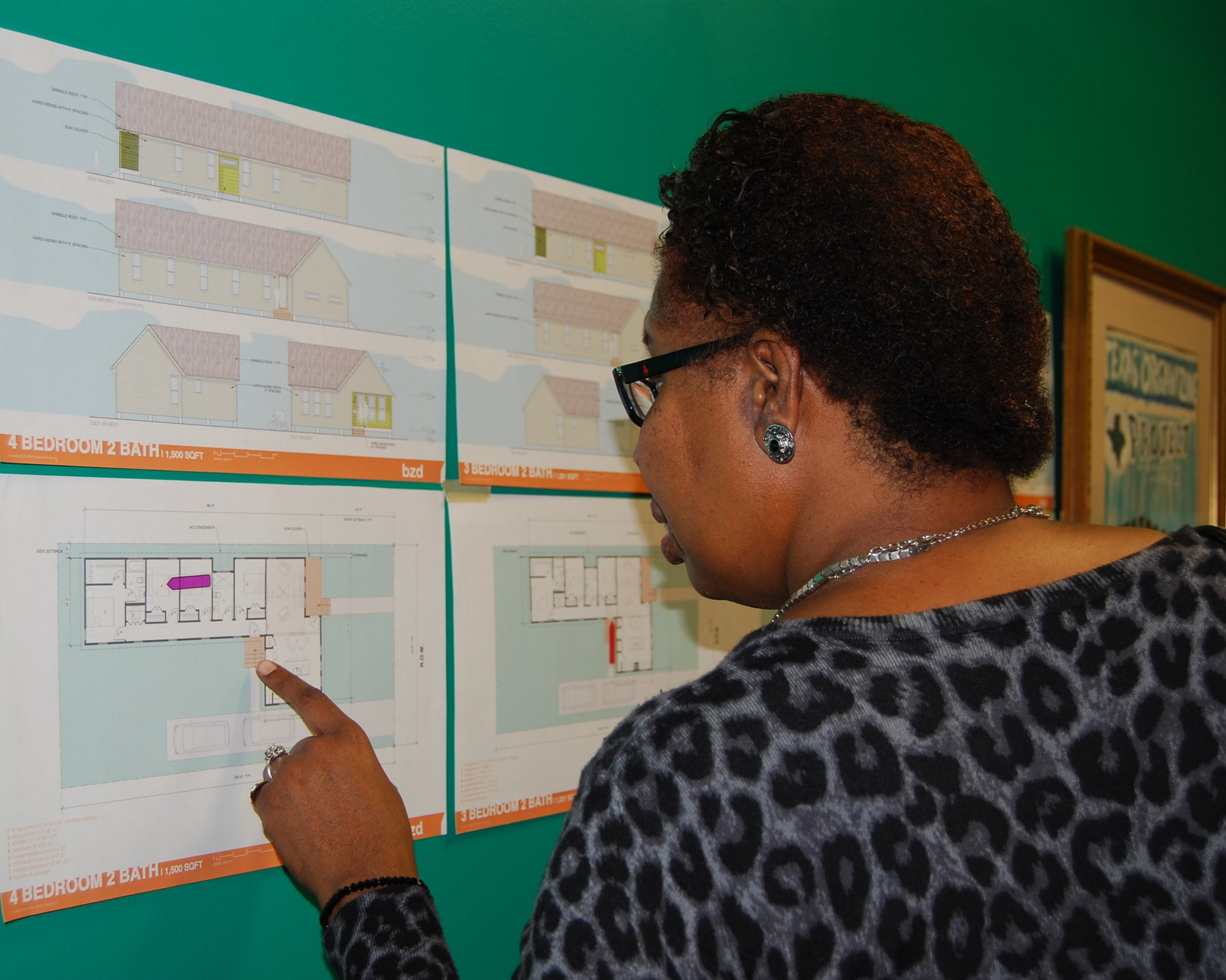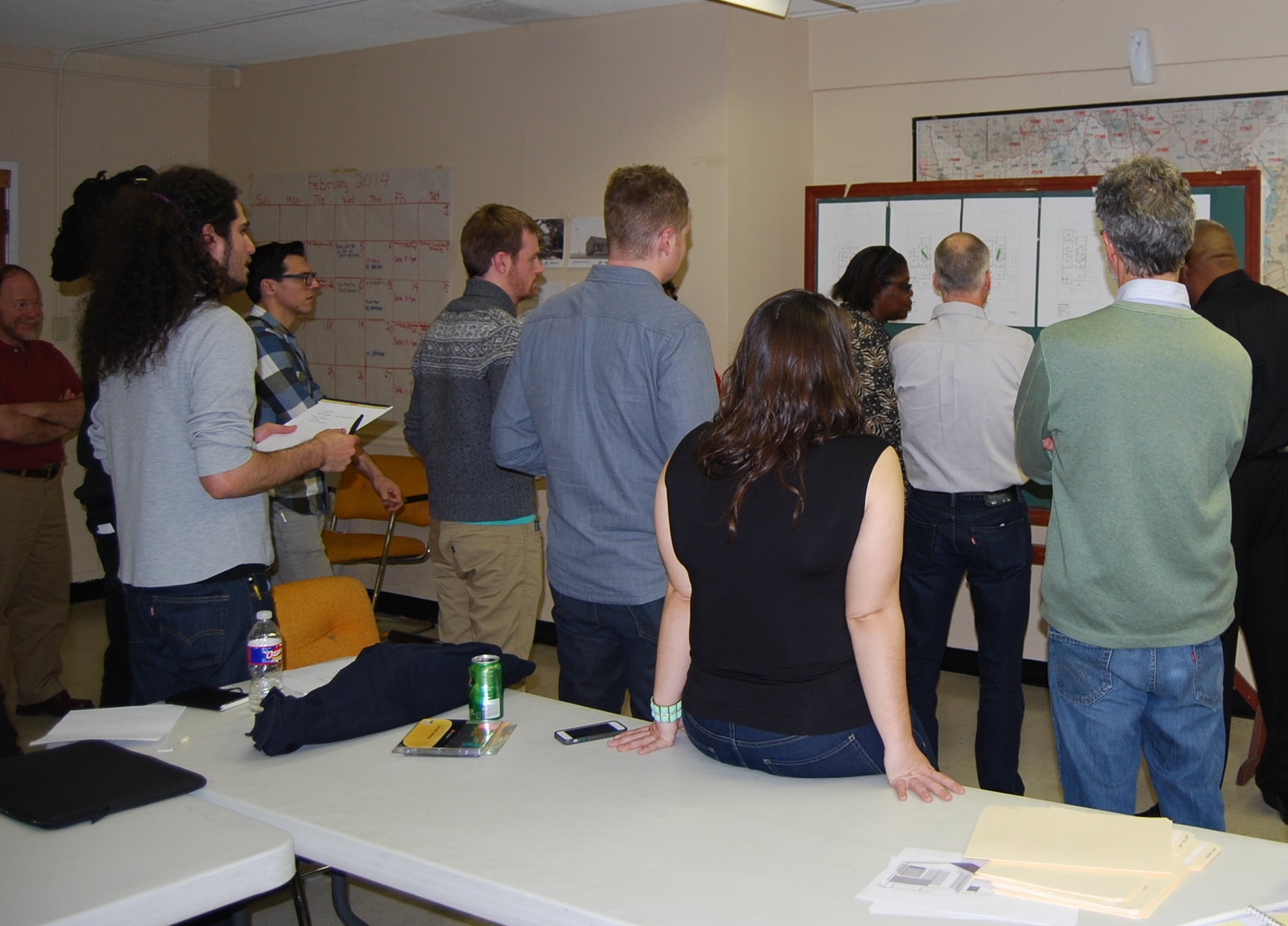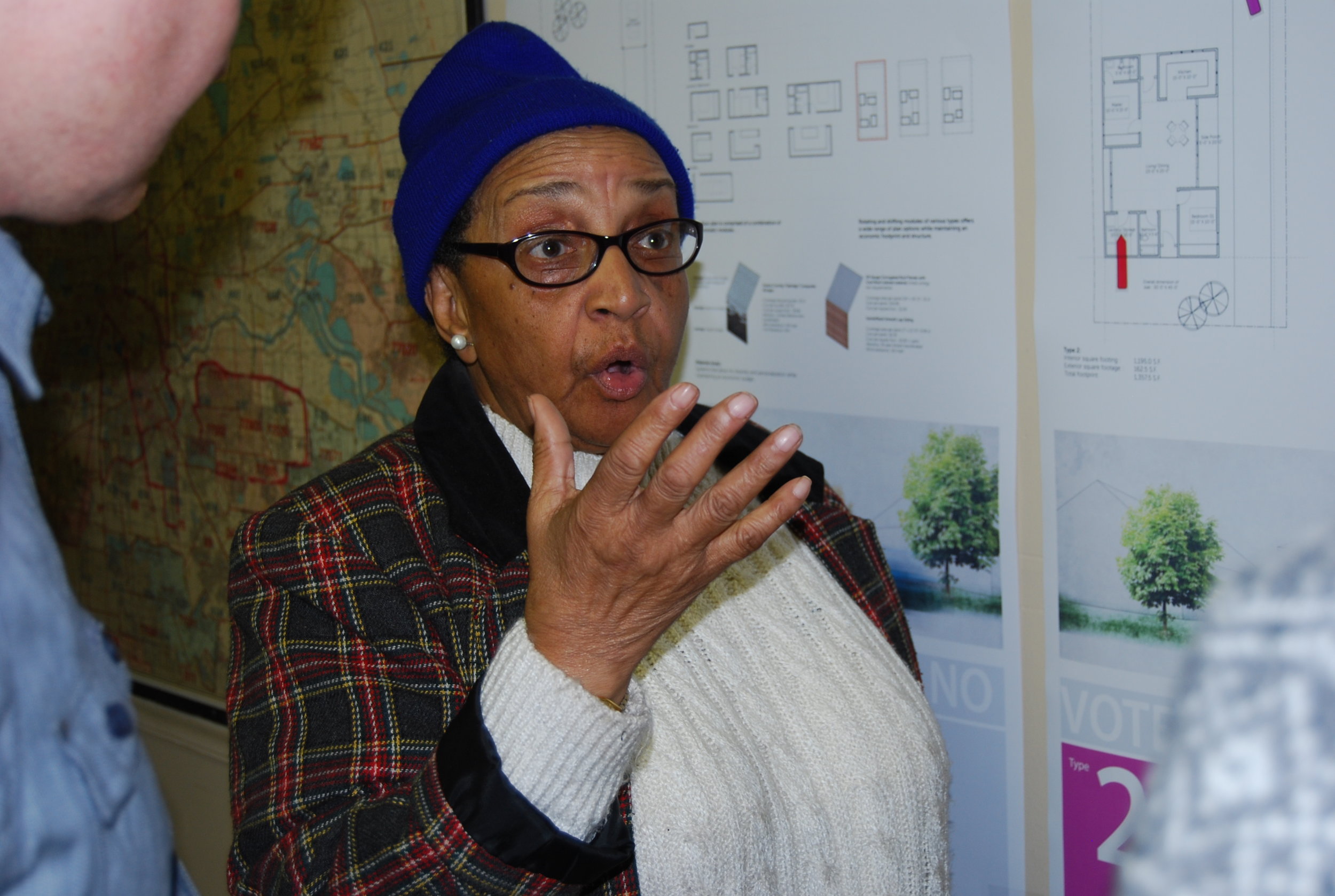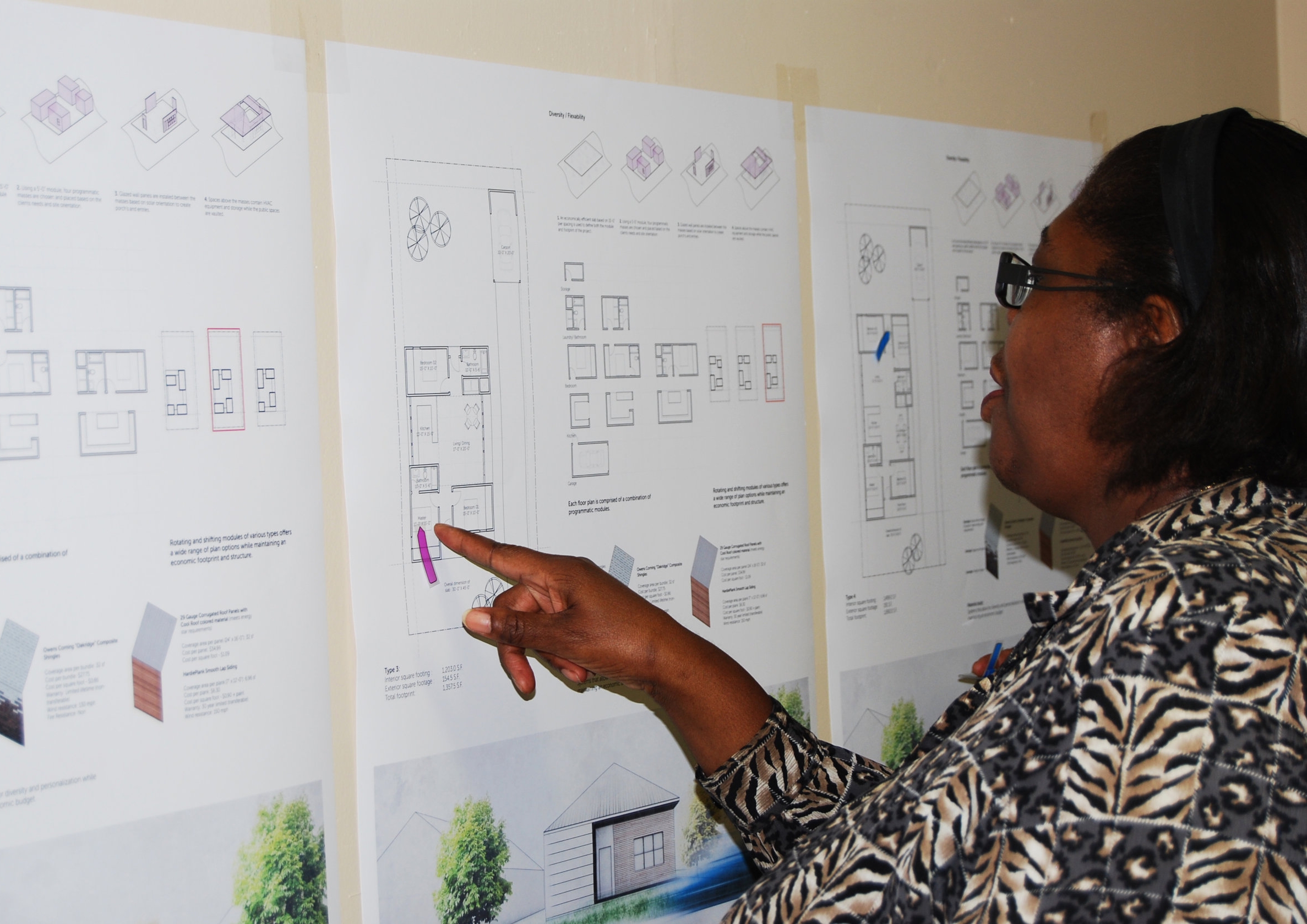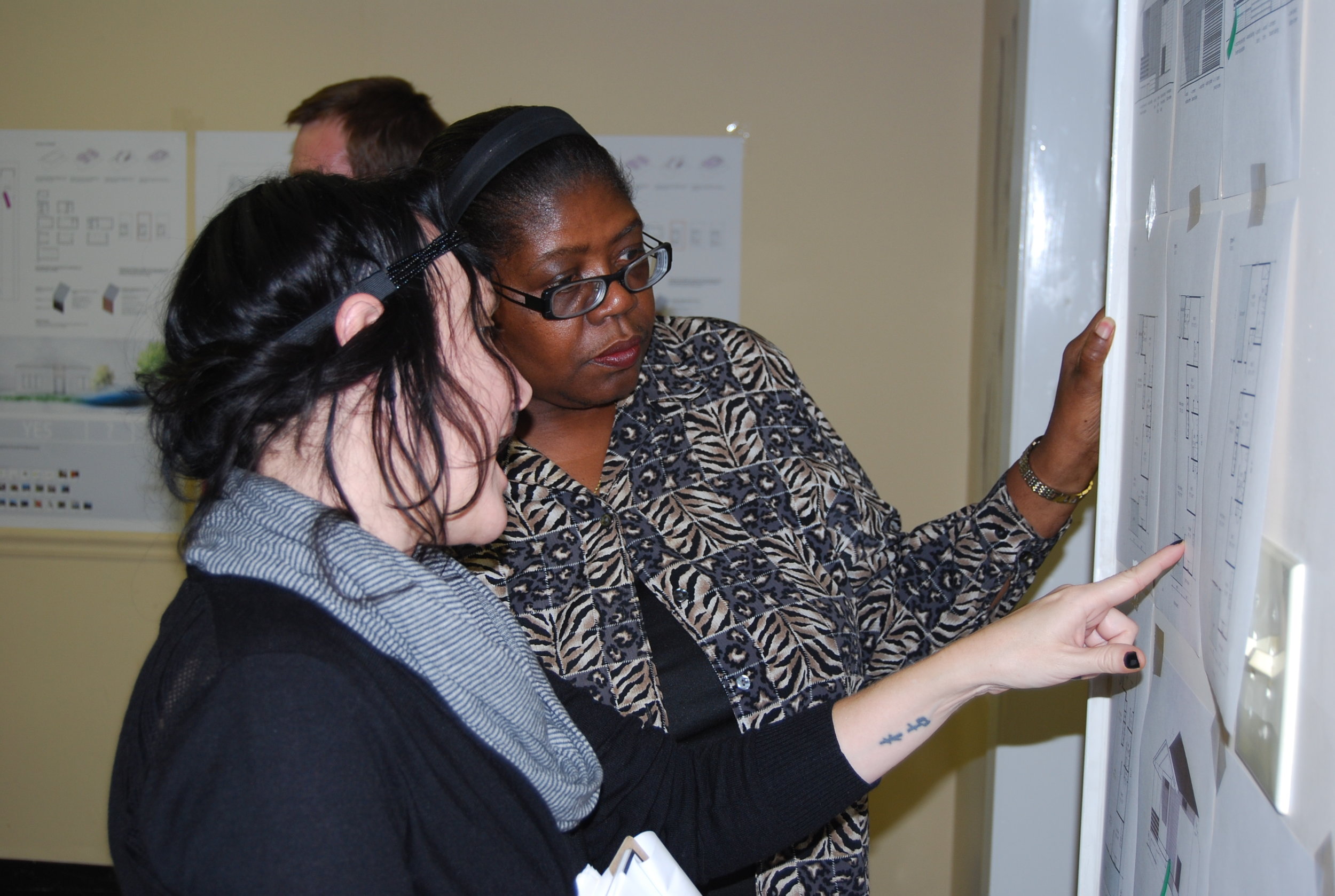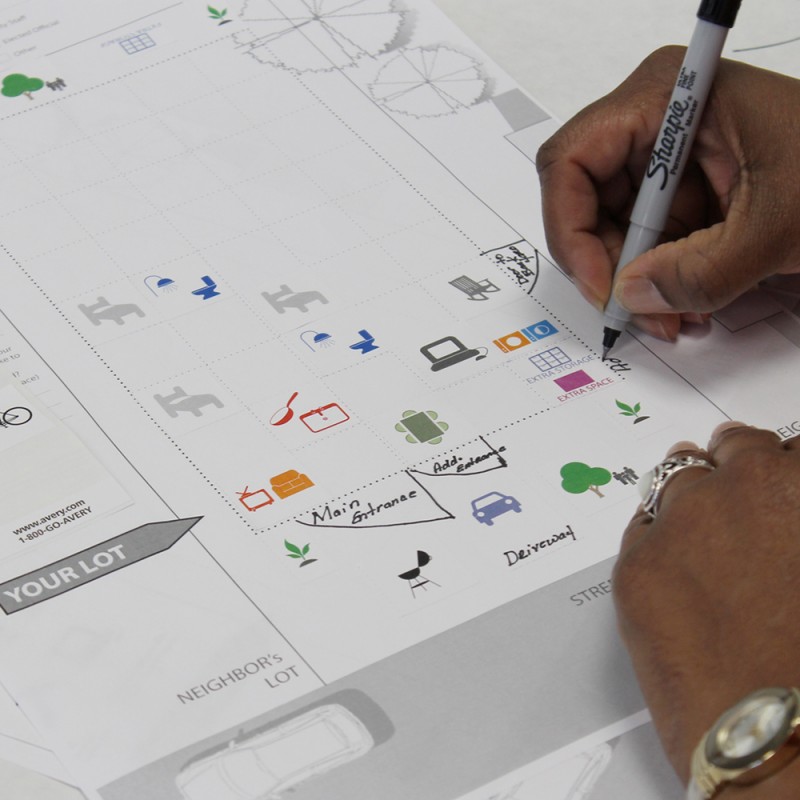We’re putting together a Housing Resource Guide to help Houstonians who do not regularly use the internet find access to the information they need regarding housing resources in the center.
Read MoreCommunity Engagement Report Release
In response to the destruction caused by Hurricane Harvey in 2017, Congress allocated $5.204 billion to the State of Texas for recovery efforts. In a departure from past recovery efforts, the City of Houston was given local control over $1.15 billion of these funds—and a short window of time in which to create the Local Action Plan, which outlines how federal funds will be used. The City of Houston’s Housing and Community Development Department (HCDD) sought to increase the role of community engagement in informing their final Local Action Plan and Disaster Recovery Programs-- its their largest Engagement effort to date. buildingcommunityWORKSHOP was pleased to collaborate with HCDD, the Community Design Resource Center (CDRC), Texas Organizing Project (TOP), Local Initiatives Support Corporation (LISC), and the UT Public Health Department to expand community engagement activities in the disaster recovery process.
Beginning in June 2018, HCDD reached out to local organizations to plan a series of meetings with different groups to understand their issues and expectations, receive recommendations about next steps, and identify potential partners. Then, local and community organizations were contacted to build partnerships for a community engagement process that would inform Houston’s Local Action Plan for the allocation of Community Development Block Grant-Disaster Relief (CDBG-DR) funds and understand the needs of communities prior and after Harvey.
Due to the rapid turnaround desired by the Mayor’s office, the Engagement process took place over the course of six weeks. [bc] and the CDRC worked together to craft a methodology, design interactive activities that would engage diverse communities, facilitate conversations, and build the department's capacity to facilitate and implement community engagement activities. [bc] and CDRC provided support to HCDD and other partner organizations by developing meeting materials, facilitator guides, and conducting facilitator training. See below the city wide meeting locations:
The findings of the engagement process were clear. Houstonians voiced their desire for increased transparency and community participation in the recovery process. Improved drainage and long-term planning for future disasters—Harvey was the third disaster to strike Houston in 5 years—were also priorities.
The Community Engagement Report detailing the methodology was initially prepared as an internal report from [bc] to the HCD Department, but given the lessons learned and reflections included in the report, the City wished to turn it into a public guide for potential use by other cities looking to enhance their Engagement efforts. It was published online in November of 2018—to learn more, we invite you to read the Report in its entirety.
Expanding RAPIDO for Gulf Coast Recovery
We are excited to report on our progress in bringing the RAPIDO model of temporary-to-permanent housing to families affected by Hurricane Harvey.
On July 26, the first RAPIDO Core unit in Houston opened its doors to visitors and stakeholders. Also in attendance was the family who will call the Core home. On September 20, the family moved into the first RAPIDO Core in the city of Houston, TX. The family will remain there throughout construction of the Expansion, transforming the temporary Core unit into a permanent three-bedroom home. Construction on the expansion began in October.
Our efforts have also included design for RAPIDO Accessory Dwelling Units (ADUs), which can act as temporary housing during the home repair process, and then provide a source of extra income as a rental unit after reconstruction.
The design and partnership work with Covenant Community Capital and Texas Housers to realize RAPIDO units in Houston was supported by funding partnership with Enterprise Community Partners.
We are excited to announce that we are working to design and build 15 RAPIDO Core Units in Gulf Coast communities through a new grant from the Rebuild Texas Fund. Through this grant, we are also conducting research and development for mass production of RAPIDO Cores. This will serve 15 additional families affected by the storm, while also advancing progress toward the mass production of RAPIDO Cores.
New Home Development Program Breaks Ground in Acres Homes
On September 4, the City of Houston Housing and Community Development Department broke ground on 8 homes in the Acres Homes neighborhood that were designed by [bc] as part of the New Home Development Program. Drawing from the engagement done as a part of the City of Houston's Disaster Recovery Round 2, the designs were updated to improve resiliency and accessibility. [bc] staff were in attendance for the event, in addition to Mayor Sylvester Turner and representatives from HCDD.
Check out our photos from the event below!
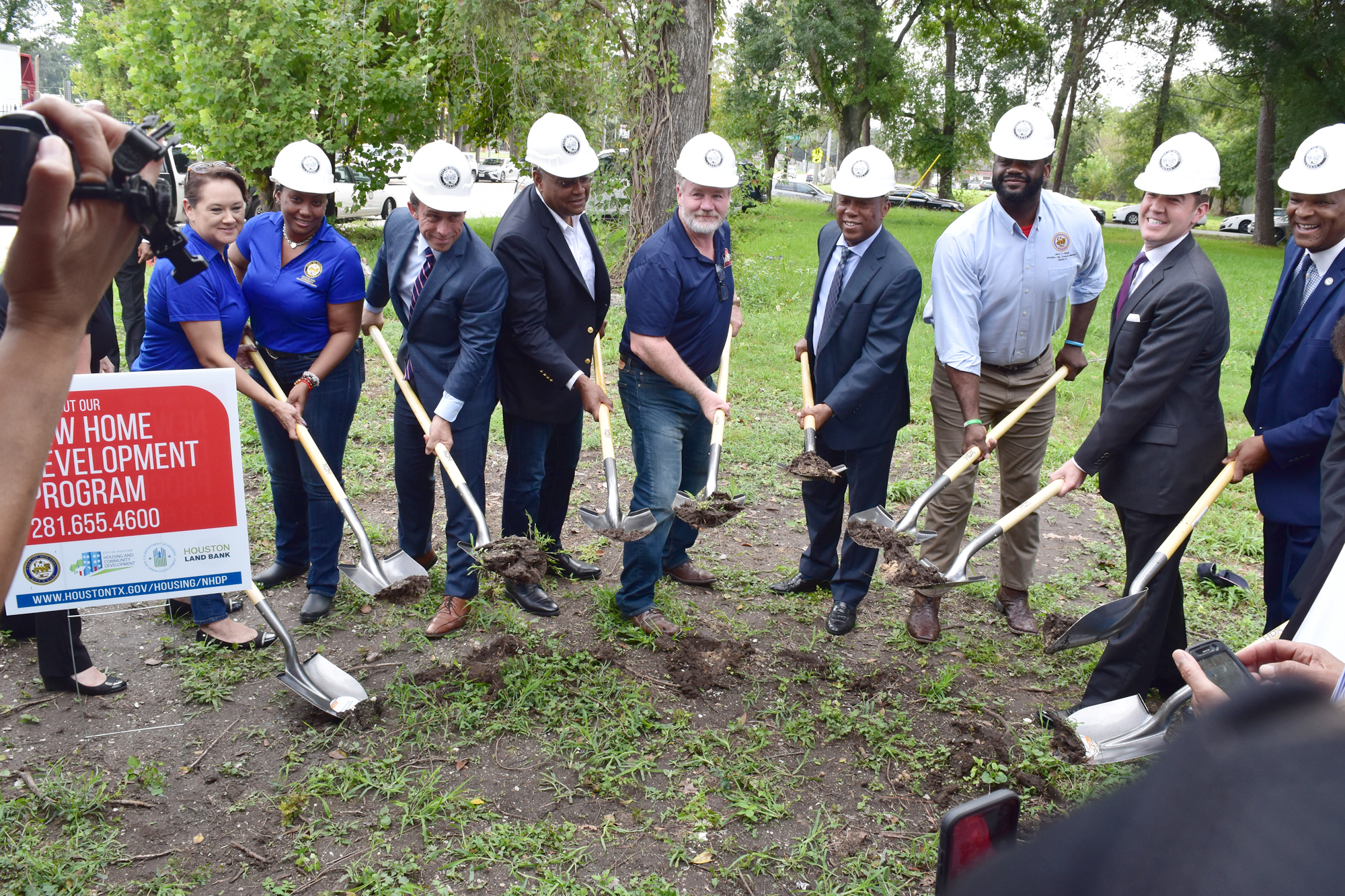


Acres Homes: New Home Development Program
Healthy, viable communities rely on strong interpersonal ties at the neighborhood level—and the preservation of affordable housing is crucial to this equation. With that in mind, we are excited to announce a partnership between buildingcommunityWORKSHOP and the City of Houston focused on creating affordable single family homes for sale using lots available from the Houston Land Bank.
Building off of our work with the Disaster Recovery Round 2 (DR2) program, [bc] is partnering with the City to design 18 new, single-family homes in the Acres Homes neighborhood. Through DR2, we had the opportunity to work with local designers in developing a Community Engagement process to set contextual and programmatic design preferences for the targeted neighborhoods and to produce informed schematic home designs, including floor plans and elevations. Taking into consideration lessons learned from our affordable housing projects and the recent changes to the floodplain ordinance in Houston, [bc] worked to adapt the designs to pier and beam foundation as well as to increase their spatial efficiencies. These home designs are based on the feedback received during the DR2 engagement process, individual design meetings with over 300 households, and our recent participation in the Acres Home neighborhood design charrette through the Complete Communities initiative.
A Unique Approach to Housing Affordability
By building on lots owned by the Houston Land Bank, this program establishes a long-term strategy for affordability in the Acres Homes neighborhood. The Houston Land Bank relies on the use of strategic relationships between developers, builders, community organizations, and other stakeholders to stimulate the revitalization of vacant, abandoned, and/or tax foreclosed properties.
Why New Home Development?
The City of Houston’s New Home Development Program concentrates on bringing infill homes built on vacant lots, adding options for healthy affordable housing that increase neighbor proximity and give more families the opportunity to become first-time homebuyers.
Building new homes increases a community’s physical assets, encouraging future development and investment. Furthermore, partnerships between home designers, builders, and community organizations engaged in community revitalization are strengthened when the affordable housing stock is developed.
Here’s the Master Plan for Acres Homes:
Stay tuned for more updates on the Acres Homes development. We look forward to sharing more with you here on our website and in our newsletter!
Rapido CORE Accessory Dwelling Unit
We have developed a series of accessory dwelling units (ADUs), exploring different outdoor design layouts that allow for adaptation and flexibility of placement in multiple lot configurations. All of our ADU designs utilize [bc]'s RAPIDO CORE, a disaster recovery housing modular unit, designed for durable and fast rehousing post disaster. Check out more information about this initiative and the details for each ADU design option at [bc]'s People's Design Library.
There are many reasons a property owner would want to invest in a RAPIDO ADU: disaster preparedness, temporary housing during repairs or reconstruction, increase affordable units in the city and provide extra income to homeowners.
These structures can be built quickly using standard materials and construction methods and are designed on raised platforms in order to avoid damage from flooding. A RAPIDO ADU can also be used as a safe house during a storm, especially if your home sustains serious damage. Because RAPIDO COREs can be built quickly, the ADU can act as temporary housing and allow homeowners whose houses are in need of repairs to remain on their property while their home is repaired or rebuilt. ADUs are also often rented out to individuals, and this extra structure can give the homeowner an extra source of income once they have returned to their repaired home.
Hurricane Harvey Disaster Recovery Community Engagement
As Houston moves from relief to long term recovery, the City is preparing a plan for the $1.2 billion that will be received from the U.S. Department of Housing and Urban Development (HUD) in the fall. In order for this money to be spent in the most useful and effective way, the Housing and Community Development Department (HCDD) partnered with local community organizations, super neighborhood councils, City Council districts, and civic clubs to organize 17 public meetings to assess housing and recovery needs and priorities in Houston. [bc] and the Community Design Resource Center (CDRC) designed interactive work sessions to better engage diverse communities in Houston and build the department's capacity to facilitate and implement community engagement activities as part of their programs. A summary of the findings from these meetings as well as the Houston local action plan were publicly released by the HCDD on June 26, 2018.
These community meetings took place in various neighborhoods and engaged over 800 people. At these meetings, surveys were collected in order to track people’s personal circumstances and needs since Harvey, but the majority of the discussions were aimed at talking about their neighborhoods as a whole. This neighborhood-level feedback was documented through a round-robin discussion format and mapping exercises. Residents also had the opportunity to prioritize housing and infrastructure programs for which the CDBG-DR funds could be used.
We look forward to continuing to work with the City of Houston to engage diverse communities!
Neighborhood Needs Assessment Meeting hosted by TOP and Houston Housing and Community Development Department
Disaster Recovery Leadership Development
Houston residents will have a lasting impact in shaping the future of region as the City asks the people how they wish to see federal funds allocated for Harvey recovery. We have worked with the Texas Organizing Project (TOP) to create resources for individuals to learn about specific issues including flooding, the disaster recovery process, housing and gentrification. We hope that these modules will help people provide informed feedback at community meetings, support community organizing efforts, and empower them to have engaged conversations with local officials and experts. These educational resources will help locals understand the details regarding these issues and the systems in which these issues exist. We have been meeting with residents, TOP, and the City to pinpoint neighborhoods' specific struggles before and after Harvey.
Summaries of each module can be found below. Click the image to access the content of each module through [bc]'s People's Design Library.
Flooding:
This module explores the causes of flooding, how rain water is managed at different scales, and what residents of Houston and Harris County should be aware of in regards to flooding post-Harvey.
Housing:
This module investigates the factors that shape housing affordability, who is responsible, and ways you can advocate for more choices in Houston’s housing market.
Gentrification:
This module explores the impacts of gentrification, anti-displacement strategies, and responsibilities of preserving housing affordability and community identity in Houston.
Disaster Recovery:
This module explores the stages of recovery, types of recovery housing, and who is involved in the disaster response and recovery process.
RAPIDO in Houston
With the support of a funding partnership with Enterprise Community Partners, Inc., [bc] is working to bring the RAPIDO model to Houston, working with families affected by Hurricane Harvey in collaboration with Texas Low Income Housing Information Service and Covenant Community Capital.
We've worked to adapt RAPIDO's temporary-to-permanent housing model for this new geography and have designed a temporary-to-permanent unit for a family. RAPIDO’s housing model deploys a temporary CORE unit to family’s property weeks after a disaster, which can be expanded into a permanent home through a system of semi-custom designed additions. The purpose of the RAPIDO CORE is to bridge the gap between relief and recovery housing and provide a pathway to meet long-term family needs and preferences.
Our first RAPIDO prototype in Houston will provide the process and the means for a Houston family to become homeowners and allow us to pilot RAPIDO in Houston.
We're also working to design and build an Accessory Dwelling Unit prototype (ADU), which will pilot additional possibilities for post-disaster housing and pre-disaster planning. After a disaster, RAPIDO's ADU allows homeowners whose houses are in need of repairs to remain on their property while the repairs are made. After the homeowner moves back into their primary home, the ADU can be rented out as affordable housing, providing an extra income. The RAPIDO ADU unit can also play a role pre-disaster by providing a safe space on a homeowner's property.
Check out photos below!
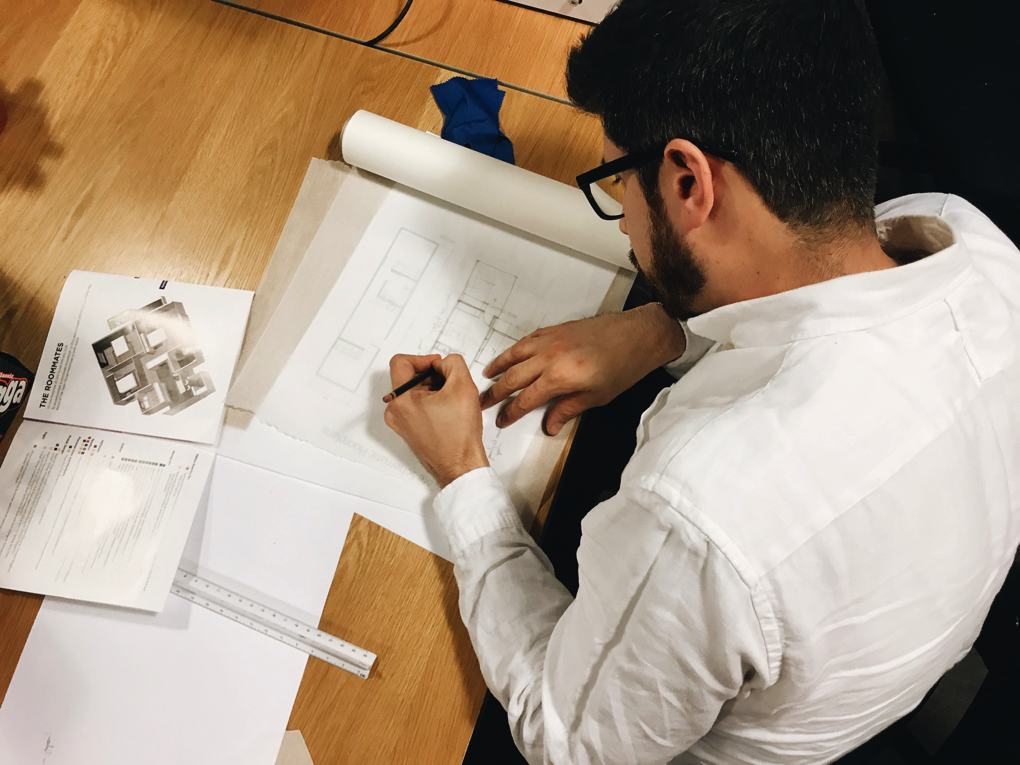
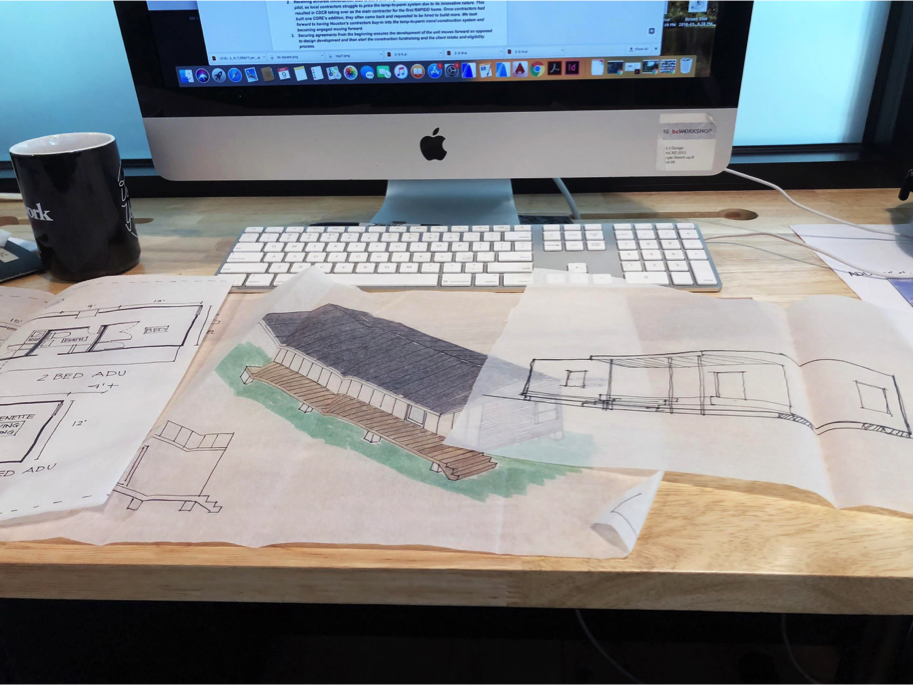
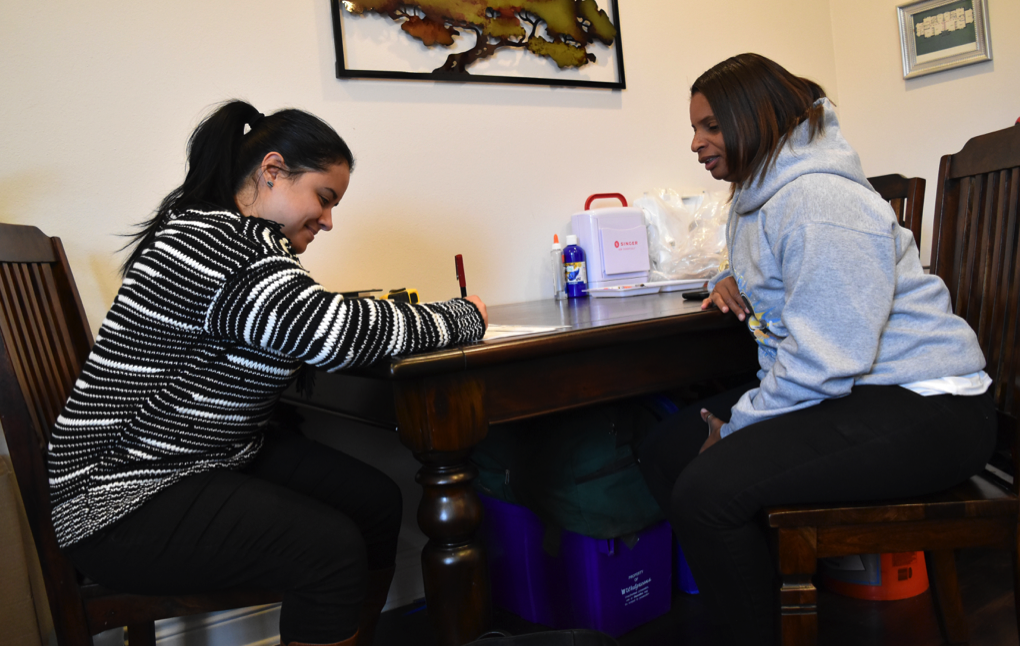
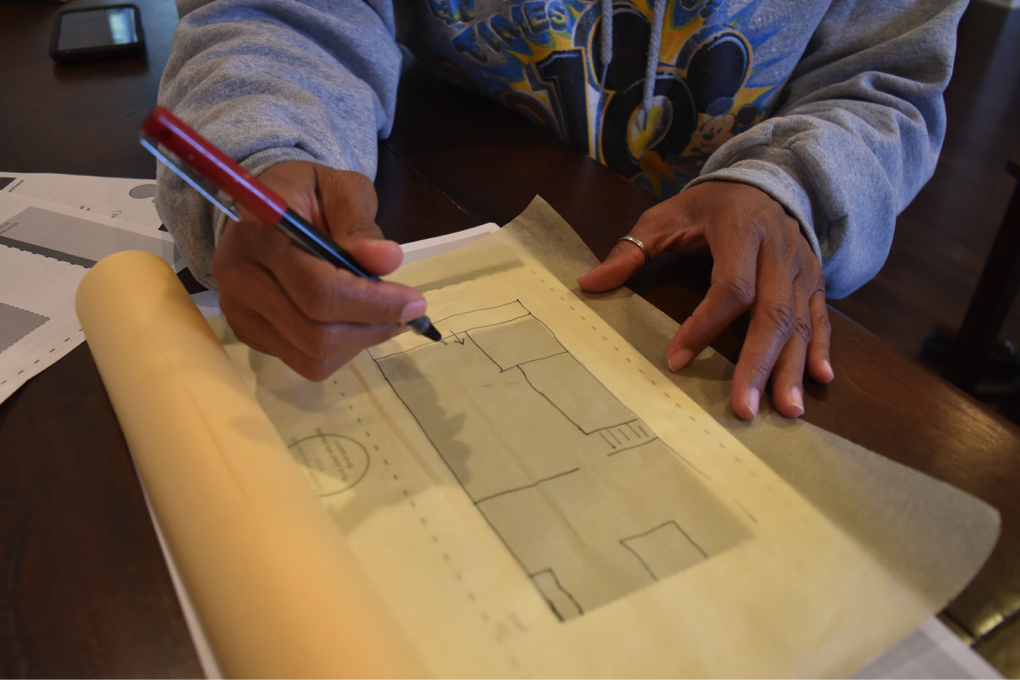
A Note from Our Founder
Dear [bc] Friends—
It's been fifteen years since I started down the path of organizing buildingcommunityWORKSHOP. Today, it gives me great pride to see the breadth of projects being undertaken advancing the public’s interest through design and community engagement.
Thank you to the more than two hundred smart, energetic young designers who joined me. You came from across this country giving your time, talents and energy. And thank you to the hundreds of sponsors who believed design could be a tool for justice. Without your investments [bc] would have never happened.
I am proud to have served as Founding Director and President of this organization. It is time now for the next phase for [bc] and for me. I have been given the opportunity to become the President and CEO of the Trinity Park Conservancy. I am pleased to bring all that I have learned from [bc] and my training to help the City of Dallas achieve its vision of the Trinity River as the natural gathering place for all of Dallas. In many ways, the work of the Conservancy marks the next step for me in my professional practice bringing together design, the public interest, and city building.
As I step down, I am happy to announce the appointment of Thor Erickson, AICP, as the new President of [bc]. During his past two years with [bc], Thor has provided critical leadership to help build capacity while also contributing his planning knowledge and skill. Thor will continue as Managing Director and Omar Hakeem, AIA, as Design Director. I will still be involved with [bc] as Board Chairman.
We began this transition last year and I am thankful to the Board of Directors and all the staff who have worked so hard and been so supportive. It’s been my privilege to serve alongside so many talented individuals as we worked across Texas and the United States. The real heroes have been our partners—community leaders, non-profits, governments and others—whom we can never fully express our appreciation for inviting us to join them in their work.
It has been a joy and honor to have been a part of the impact [bc] has made since 2003. And I want to especially thank my family for their encouragement. I also want to thank all of you for your support. It has been my privilege to work with and assist in creating this special organization.
I am extremely confident in [bc]’s future and look forward to supporting the continued work.
Onward!
Brent
[bc] Founder
Spotlight on Our Communities
Across Dallas, across Texas, and across the nation, people without means are being left out of the conversations about the design and planning of their communities. [bc] empowers individuals, fostering opportunities for choice in order to amplify the voices of the most underserved residents.
Spotlight on Our Communities is a new email series that highlights the ways [bc] is engaging communities to drive the decisions that will affect their lives. Three episodes below highlight our work in the realm of community-engaged planning, disaster recovery, and resident choice-driven housing design. These stories demonstrate the true impact of our work, which is only made possible through the support of our donors, partners, volunteers, champions, and friends.
We ask for your support as we continue to bring new voices to the table and bring choice to communities who often have none.
Please explore the stories below, share them with your friends and family, and consider making your gift today! And if you aren't subscribed, sign up for our newsletter to ensure you receive future episodes delivered to right to your inbox!
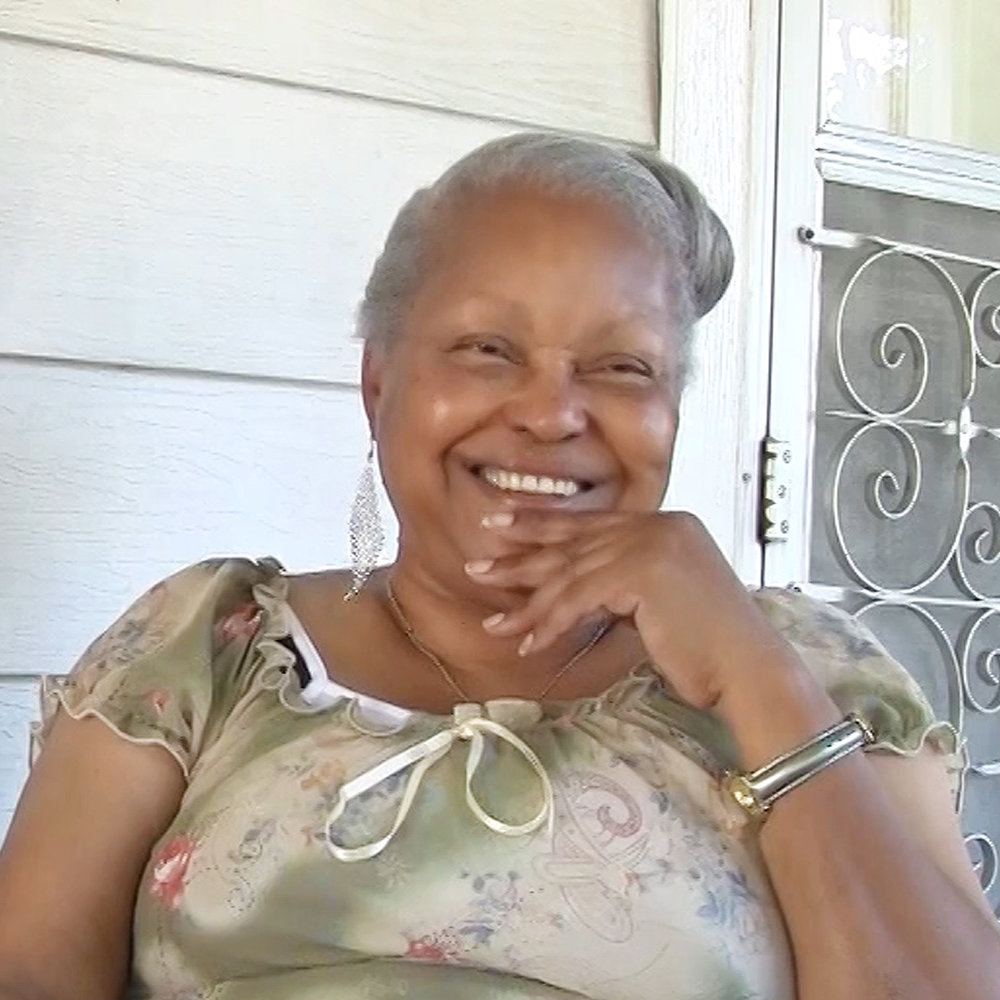
enduring through change
November 7, 2017
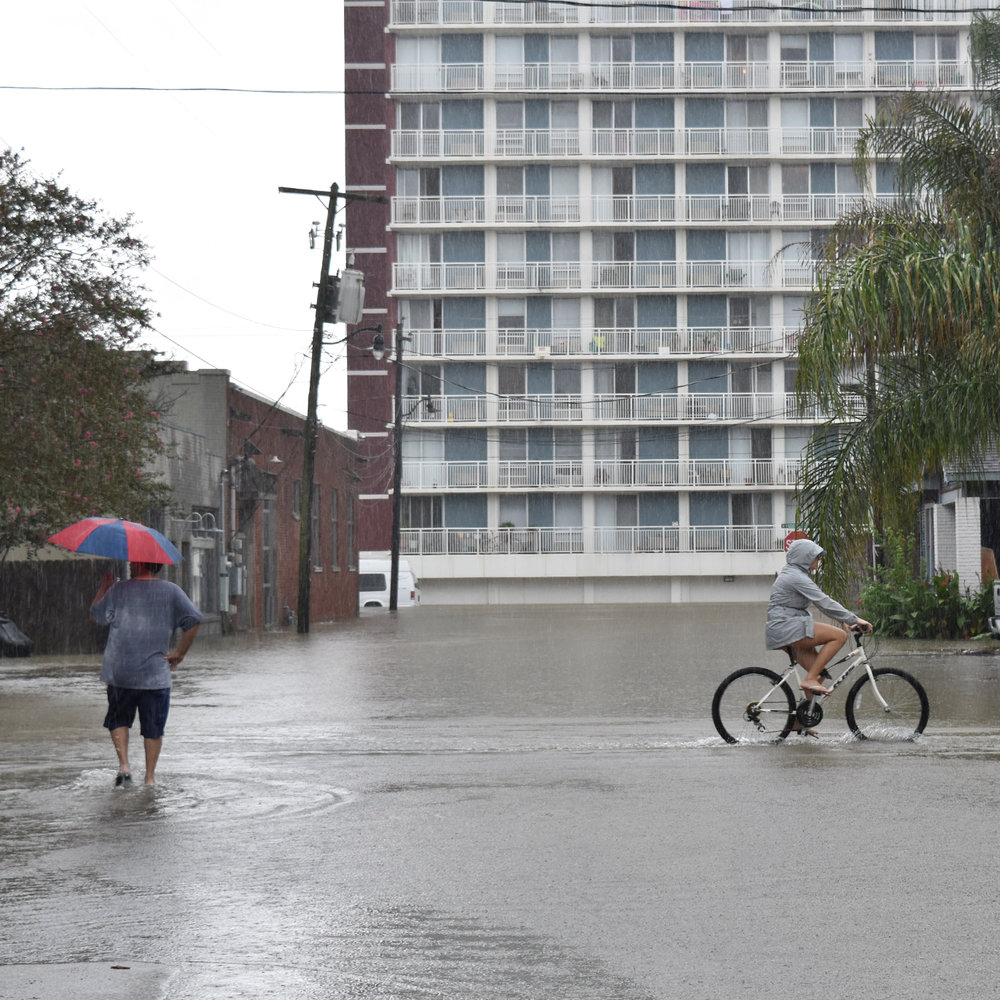
weathering the flood
November 11, 2017
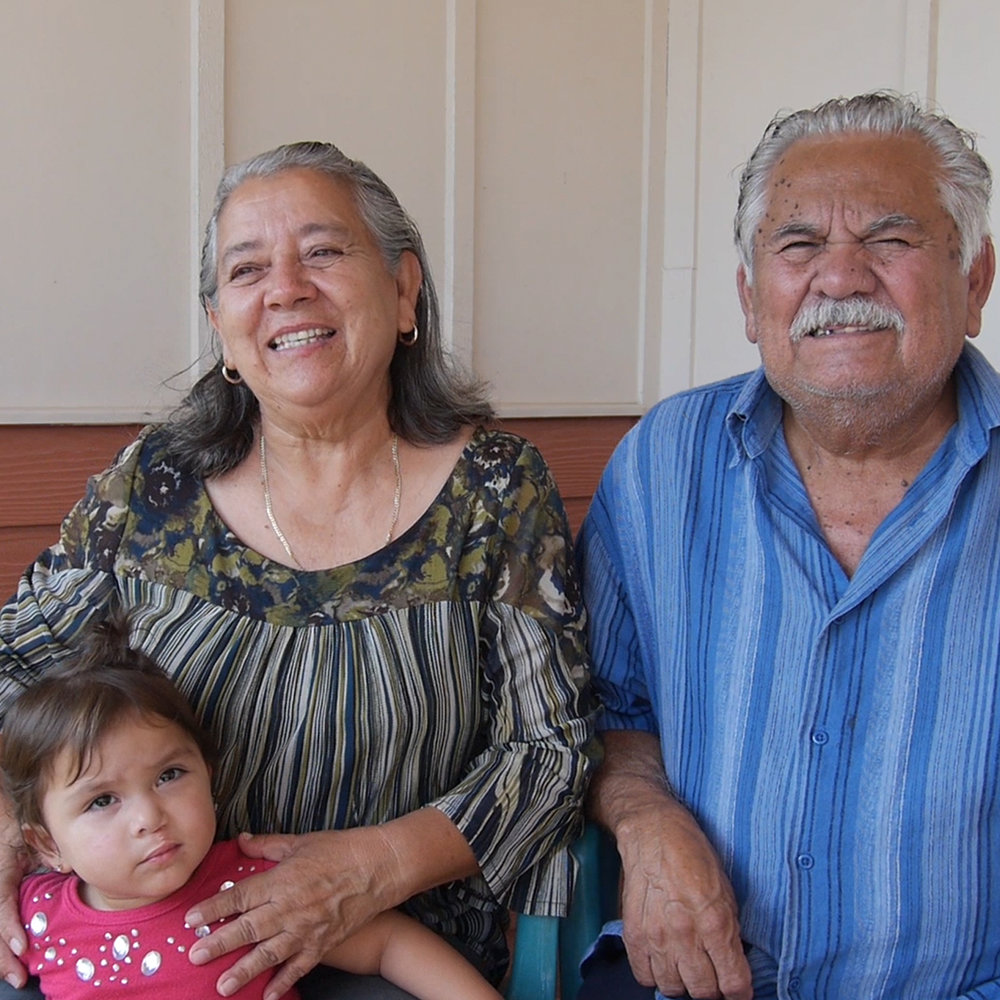
a place to call home
November 14, 2017
Disaster Recovery Round 2
See more posts about Disaster Recovery Round 2 here!
Disaster Recovery Round 2 has nearly come to an end, over 240 homes have been built to date across 6 neighborhoods throughout the city of Houston. In August the program was extended with an additional 44 homes. [bc] has met with 33 of those homeowners to select their new homes, 21 home designs have been submitted for permit to date.
A Guide to the [bc] Request for Qualifications
Learn more about projects with Design Partners: PDII, Activating Vacancy, and Little Free Libraries/Libros Libres.
This year we've revamped our Request for Qualifications. Below is a full look at the Request for Qualifications form, so that you know what information you will need to have ready before you begin.
Important things to note:
- You cannot save your work while filling out the form. Draft your answers and materials before you start.
- Active projects seeking designers will be listed in Question 1.
- If you are applying for a specific project, the application may have more or fewer questions that the application form shown here.
- There are two (2) uploads required for most applications (Questions 7 & 13):
- Question 7 is a short narrative that describes your interest, experience, and qualifications for working with community groups.
- Question 13 is a document that contains photo or graphic samples of your work.
- References (Question 8) are not required for the general application, but strongly encouraged!
- You may not hear back immediately. Projects and volunteer opportunities occur throughout the year at various times and frequencies.
- If you have questions, email us at inform@bcworkshop.org or give us a call at 214.252.2900.
Community Design Lessons at Structures for Inclusion 2015
From April 11-12, [bc] presented at the Structures for Inclusion conference in Detroit, MI and learned from other examples of public interest design. Elaine Morales-Díaz contributed to the discussion on the role of resiliency in public interest design by presenting the disaster recovery housing program, a context-based, innovative model for disaster relief housing that encompasses all of the tenets of resiliency. Resiliency not only includes recovering from a disaster, but preparing for recovery in a comprehensive way (also known as "pre-covery") that allows local teams to respond & adapt to current or sudden adversities without sacrificing community engagement, home design, or home quality. Projects from Detroit and other resilient cities were presented to practitioners of public interest architecture & design, who were challenged to incorporate community engagement principles into questions of urban revitalization and resilience.
Structures for Inclusion is an annual conference hosted by Design Corps that features SEED Award winners. The SEED Award is given to design and architectural projects that have exceptional social, economic and environmental impact.
There were also lessons we took from the context of Detroit. The Impact Detroit Community Development Guides have resonance for [bc]'s three geographies given that they all face the challenge of dealing with vacant urban in-fill. The guides provide a way for citizens and community members to participate in revitalization and development efforts. Detroit's location also provided valuable takeaways on engaging people outside the design community in public interest design work. A solid methodology is key to engaging various stakeholders, as well as reflecting on what went well during the design process & what didn't. [bc]'s six core methods of work -- informing, analyzing, activating, mapping, making & storytelling -- are designed for that purpose. Understanding the relationship between design & other elements in the built environment requires seeking knowledge outside of our field.
In particular, the El Guadual Youth Development Center in Colombia is an example of how architecture can provide appropriate facilities for young children in an educational context while incorporating students into the design process. However, the buildings themselves were a catalyst for social improvement, and their design/construction programs increased the local community's skill set. In Brownsville, [bc] has developed a house design to be built by participants in the Youthbuild program, which aims to teach low-income youth construction skills in the Rio Grande Valley.
Susan Szenasy, editor-in-chief of Metropolis Magazine, was also a keynote speaker on Saturday night. She provided sharp insight on how architects can better engage stakeholders and communicate their intentions more clearly through the showcase of projects like Via Verde in New York City. Via Verde is an example of how affordable housing can be beautiful, low-cost, and provide dignity & choice to its residents. Projects where we strive to encompass these principles include Congo St. in Dallas and DR2 in Houston. DR2 in particular has incorporated housing choice among residents as a key component of the post-disaster housing recovery process. Szenasy also mentioned how Metropolis' relative lack of architectural jargon and commitment to storytelling makes design more accessible to the public. [bc] strives to make sure its informing & storytelling efforts are relevant to a wide range of audiences both inside and outside the design community through the use of web posts, social media, community engagement events, and neighborhood research.
Overall, SFI 15 was a positive experience, especially for the seven bcFELLOWS in attendance -- it provided networking opportunities and showcased examples of public interest design in a variety of contexts. The conference allowed fellows in particular the opportunity to engage with a variety of practitioners & observe different models for practicing public interest design.
Improving the Recovery Process
In Texas, disaster recovery takes far too long and is marred by inefficiencies and high costs. Instead of re-inventing disaster recovery programs after every disaster, we need to plan for recovery before a disaster strikes, allowing for faster recovery time with less money invested to build greater value. In 2009, the Texas State Legislature passed legislation creating a demonstration project to design a better system. The Legislature needs to act again to expand this Texas solution.
Given our work with the RAPIDO Demonstration Project in the RGV and Disaster Recovery Round 2 in Houston, we joined with our partners and created a video outlining what needs to change in our Texas disaster response programs.
DR2 Design Meetings and Construction
See more posts about Disaster Recovery Round 2 here!
As a part of Round 2 of the City of Houston’s Disaster Recovery Program (DR2), the design team, led by bcWORKSHOP and supported by Gulf Coast Community Design Studio, Unabridged Architecture, and the University of Houston Community Design Resource Center, is working to deliver single family infill home designs.
The team is committed to delivering high-quality cost-effective sustainable designs that respect the communities interests and character while offering individual homeowner choice through individual design meetings. These design meetings allowed each family to further customize their chosen design from the Home Design Catalogue in order to ensure it fit their needs and site constrains for construction.
More information about this program can also be found at the Disaster Recovery Round 2 project website. You can also download our DR2 Design Guidebook to find out more about the six neighborhoods involved in this process.
Celebrating Local Heroes
Learn more about our MLK Day of Service projects here.
Dr. Martin Luther King Jr. challenged us to build a more perfect union and taught us that everyone has a role to play in that effort. For our 2015 service project in his honor, [bc] set out to recognize some of those who serve their communities by releasing the Second Edition of buildingcommunityHEROES trading cards. By creating a fun, tactile, and pocketable way to learn about those working to improve our communities, we hope to encourage those of all ages to honor their heroes and engage in the causes that speak to them.
We put out the call for local hero nominations at the beginning of January and received just over 100 nominations for those working tirelessly in Dallas, Houston and the Rio Grande Valley. Nominations included selfless family members, state senators, founders of schools, advocacy group members and fearless neighborhood leaders. It was not easy, but from here we researched and curated the nominations to get a final group of heroes with a diverse range of causes, ages, backgrounds and levels of impact. After the final selections were made, the cards were printed, sorted, packaged and ready for a January 19 distribution.
We distributed the cards on Martin Luther King, Jr. Day and throughout the week in Dallas, Houston and the Rio Grande Valley. We hope that the stories of these 24 heroes will inspire people to be more active in their communities. We also hope that the cards will encourage people to think about and honor their local heroes. If you were not able to pick up a pack, check out all 24 heroes plus 2014's at www.buildingcommunityheroes.org.
Who is your hero? Share them on social media at #bcHEROES2015 and nominate them for the third edition of trading cards!
Design Gallery
Read more about the Disaster Recovery Round 2 work in Houston.
16 Preliminary home design boards were displayed for community review and feedback on Thursday, February 27th. The designs presented were a result of the collaborative design process between the project team, local design architects, community participants, residents and DR2 applicants from the CRA and Outreach Neighborhoods; Acres Homes, Independence Heights, Near Northside, Fifth Ward, OST/ South Union, and Sunnyside. To view the designs, and learn more about the project, visit: dr2homedesign.org
Check out photos from the event on our Facebook page!
DR2 Housing Design Focus Group
See more posts about Disaster Recovery Round 2 here!
On February 13th, the design team welcomed neighborhood residents, community leaders, and local design architects to the Community Focus Group held in the Community Room and the Jayne Junkin’s Memorial Room at the Texas Organizing Project office in Houston. The focus groups reviewed preliminary schematic home designs. Participants spoke one-on-one with the local architects on each of over 30 designs that were presented to address comments, questions and concerns. Participant input informed the development of schematic home designs presented in the Gallery Show on February 27, 2014.
More information about this program can also be found at the Disaster Recovery Round 2 project website. You can now download our DR2 Design Guidebook to find out more about the six neighborhoods involved in this process.
DR2 Community Design Workshop
Read more about the Disaster Recovery Round 2 work in Houston.
On February 1st, the project team welcomed neighborhood residents, community leaders, local design architects, and city staff to Houston Housing Authority’s Neighborhood Resource Center, where they worked together to advance the housing interests of the six target communities. Over 50 participants were in attendance.
The Community Design Workshop used activities to document contextual and programmatic design preferences for Community Revitalization Areas (CRA) & Outreach Areas, and will inform schematic home designs, including floor plans and elevations. Participants at the Community Design Workshop were divided into six groups, based on CRA & Outreach Area neighborhoods (Acre Homes, Independence Heights, Near Northside, Fifth Ward, OST/South Union, and Sunnyside). Each participant was encouraged to share and debate ideas with the assumption that all ideas were welcomed.
Context - Participants identified neighborhood priorities in the following design categories - building performance, foundation, driveway, roof, porch, texture, doors, windows, and window details. Using a blackjack style card game, complete with a “wild card” option, participants drew their preferred building component and debated each option with their group.
Home Design - Participants diagramed their existing home and site layout, then designed their model home to accommodate their family’s needs, indicating programmatic adjacencies and areas of most importance within the home.
Conclusions - Each CRA & Outreach Area shared highlights from their group sessions which included three things about their neighborhood’s context and three things about their home designs to the entire Community Design Workshop group.
More information about this program can also be found at the Disaster Recovery Round 2 project website. You can now download our DR2 Design Guidebook to find out more about the six neighborhoods involved in this process.
Future events will include a follow up focus group, hosted by the project team and local design architects; and a home design Gallery Show on February 27th to present design ideas generated during the February 1st Community Design Workshop for selection.
![[bc]](http://images.squarespace-cdn.com/content/v1/5248ebd5e4b0240948a6ceff/1412268209242-TTW0GOFNZPDW9PV7QFXD/bcW_square+big.jpg?format=1000w)
![The CDRC and [bc] facilitate table discussions at Districts E Community Meeting. Photo: HCDD](https://images.squarespace-cdn.com/content/v1/5248ebd5e4b0240948a6ceff/1548952167625-ABT30Y6TJWNMR4YYRTOX/comm+eng.jpg)
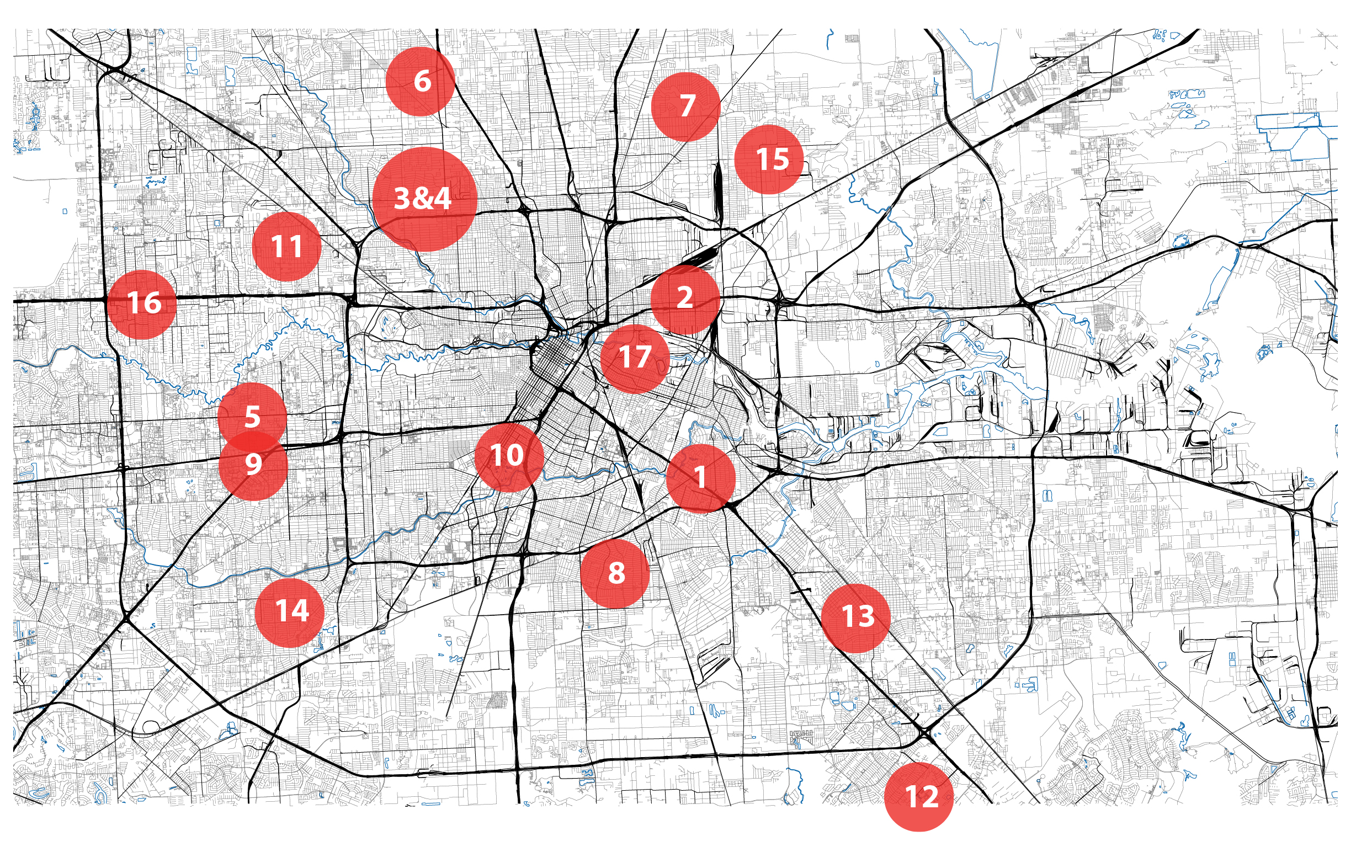

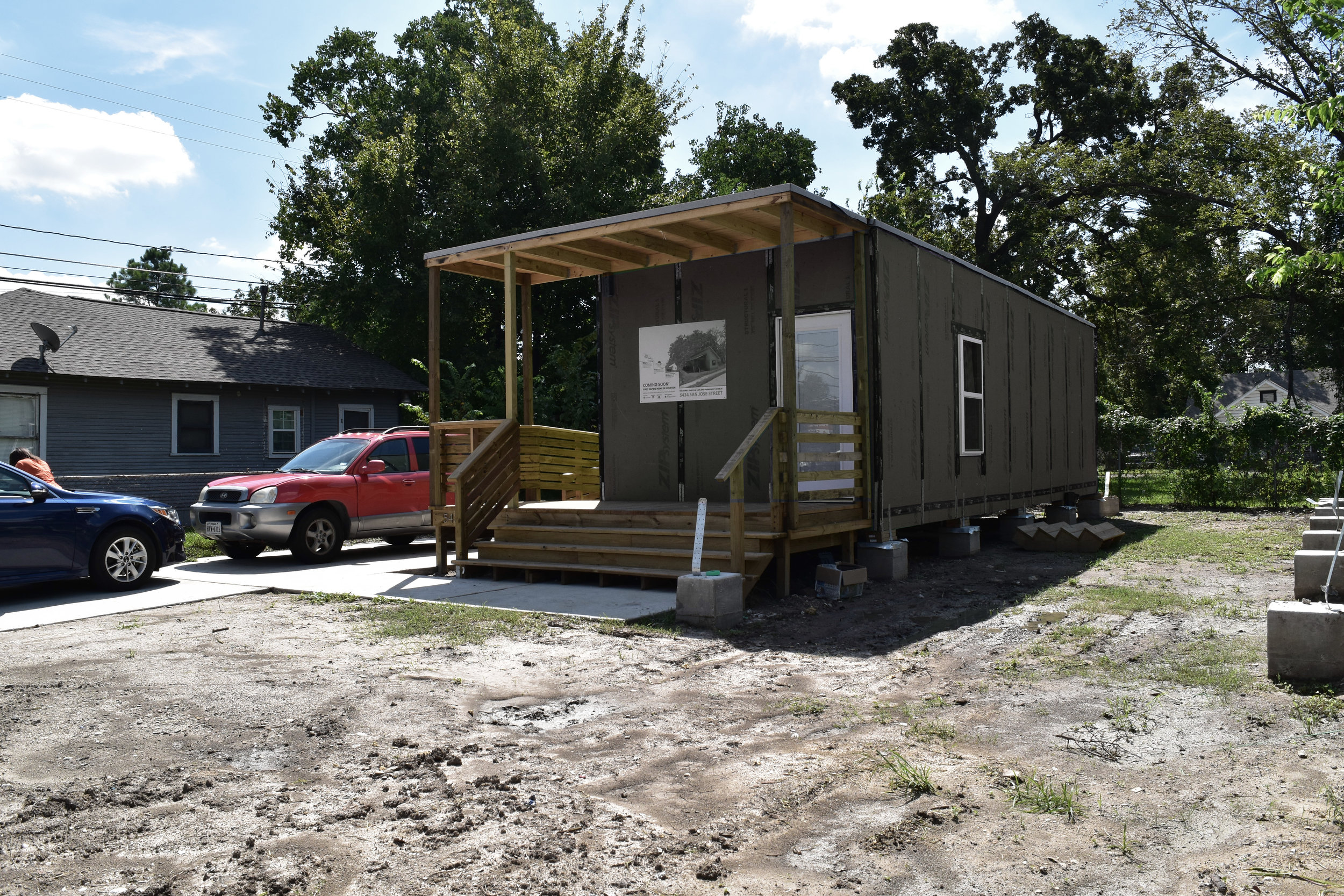
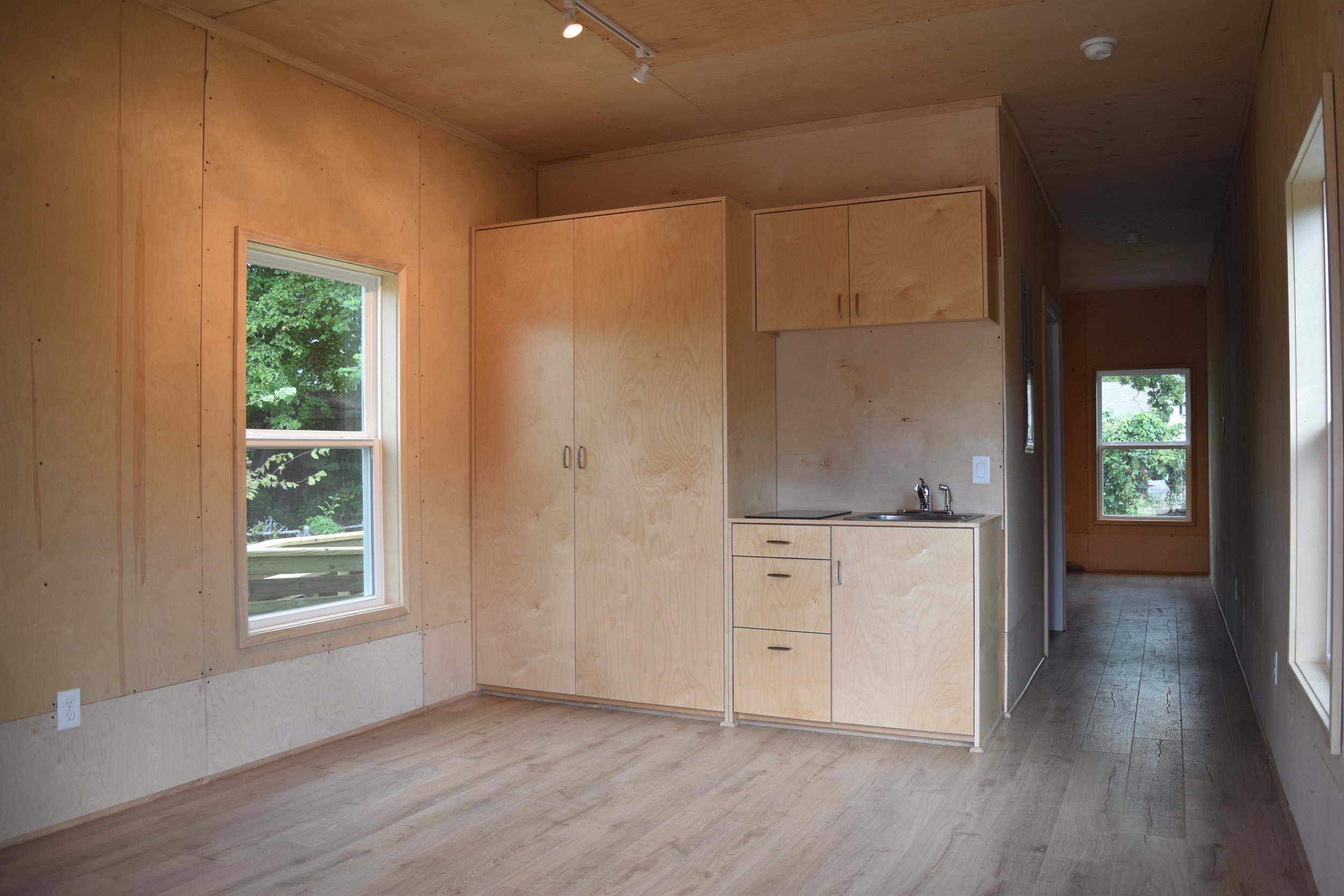


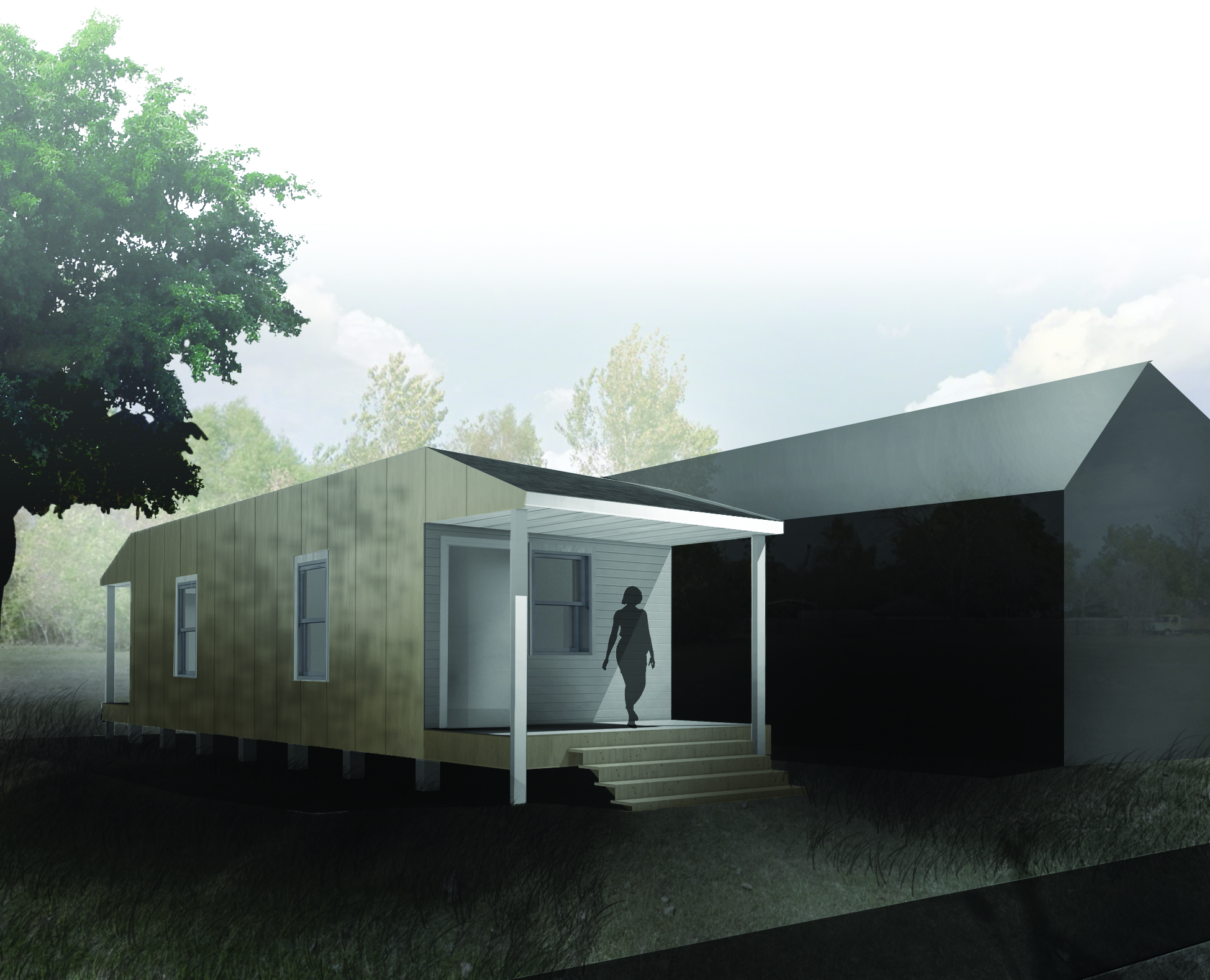
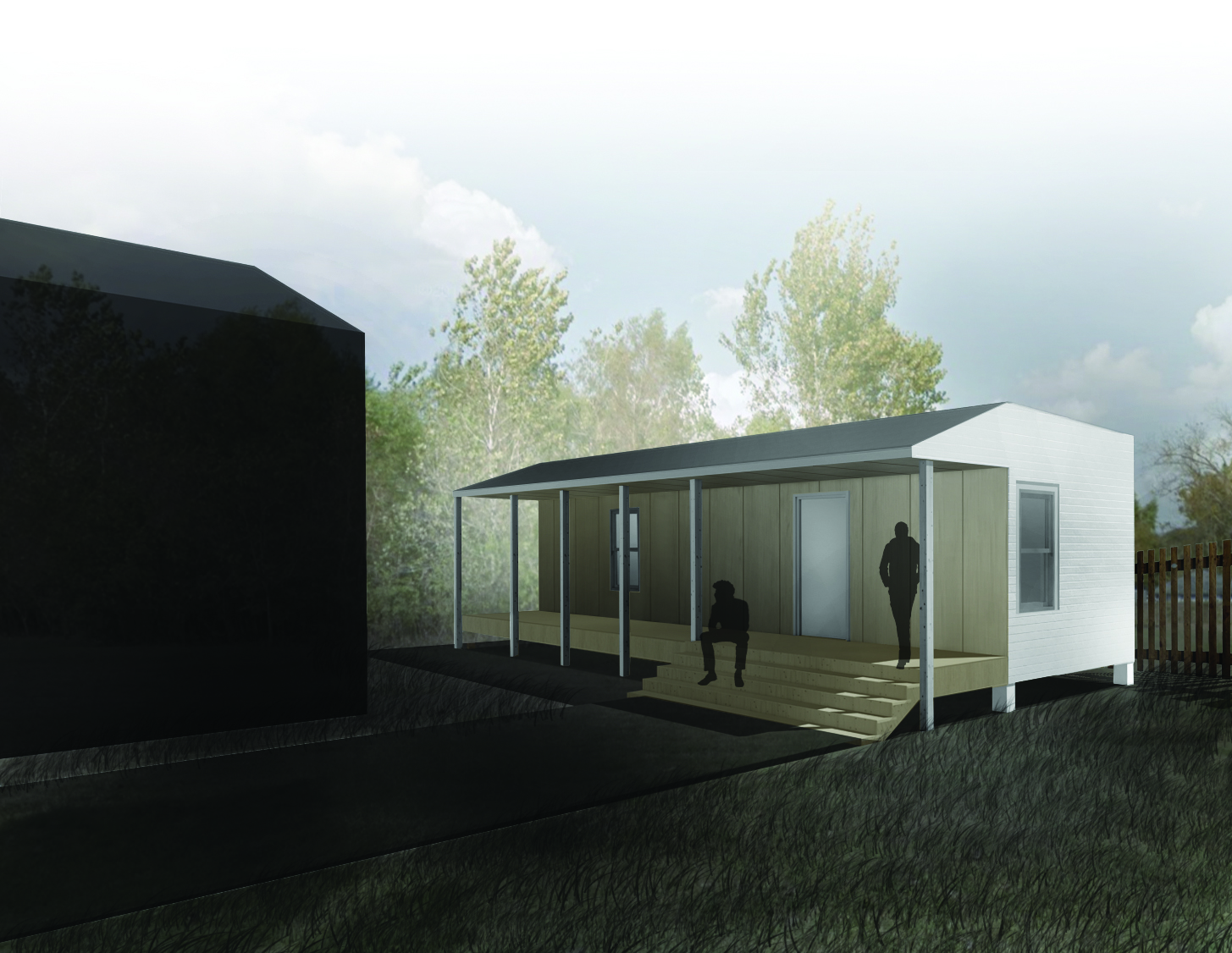
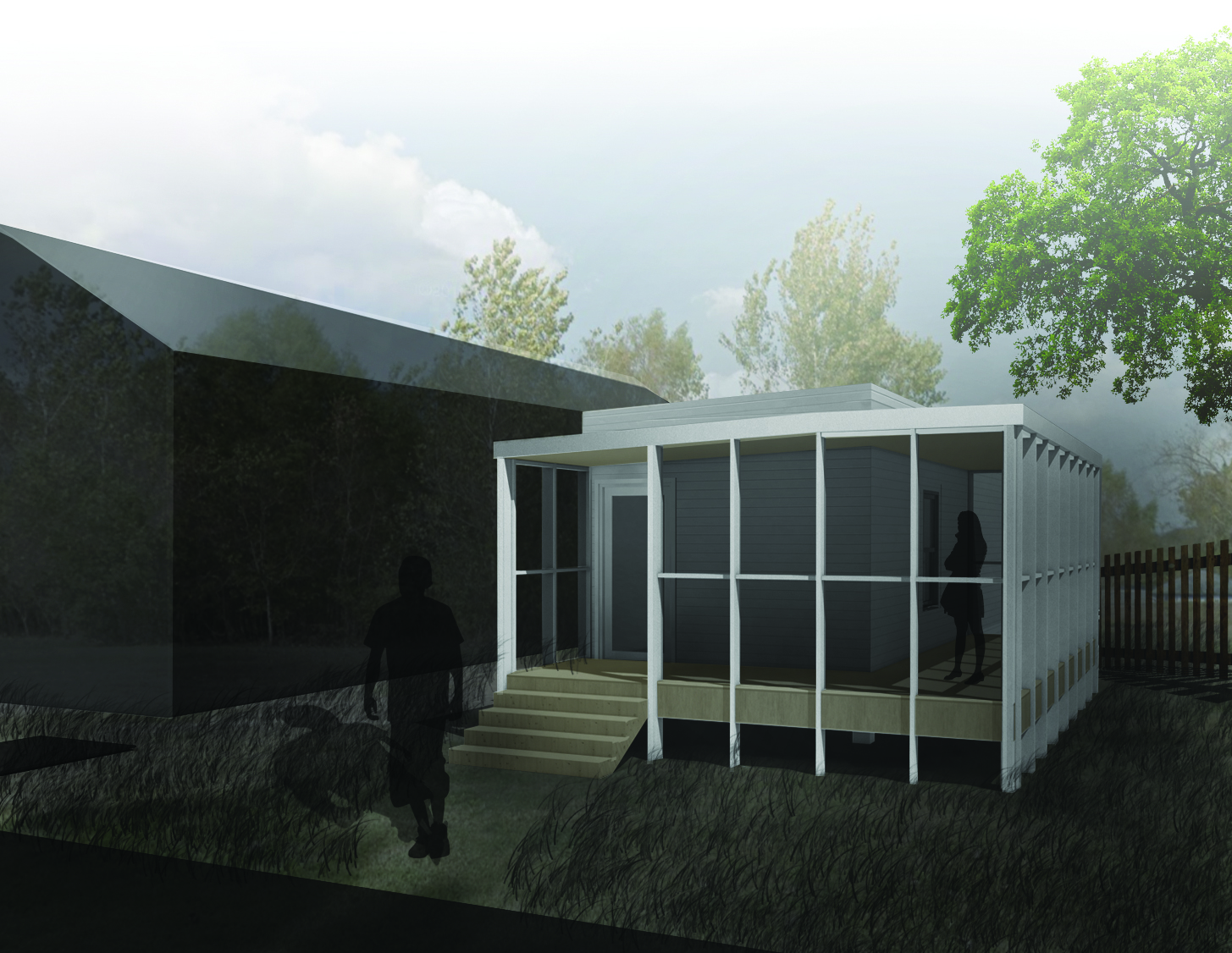
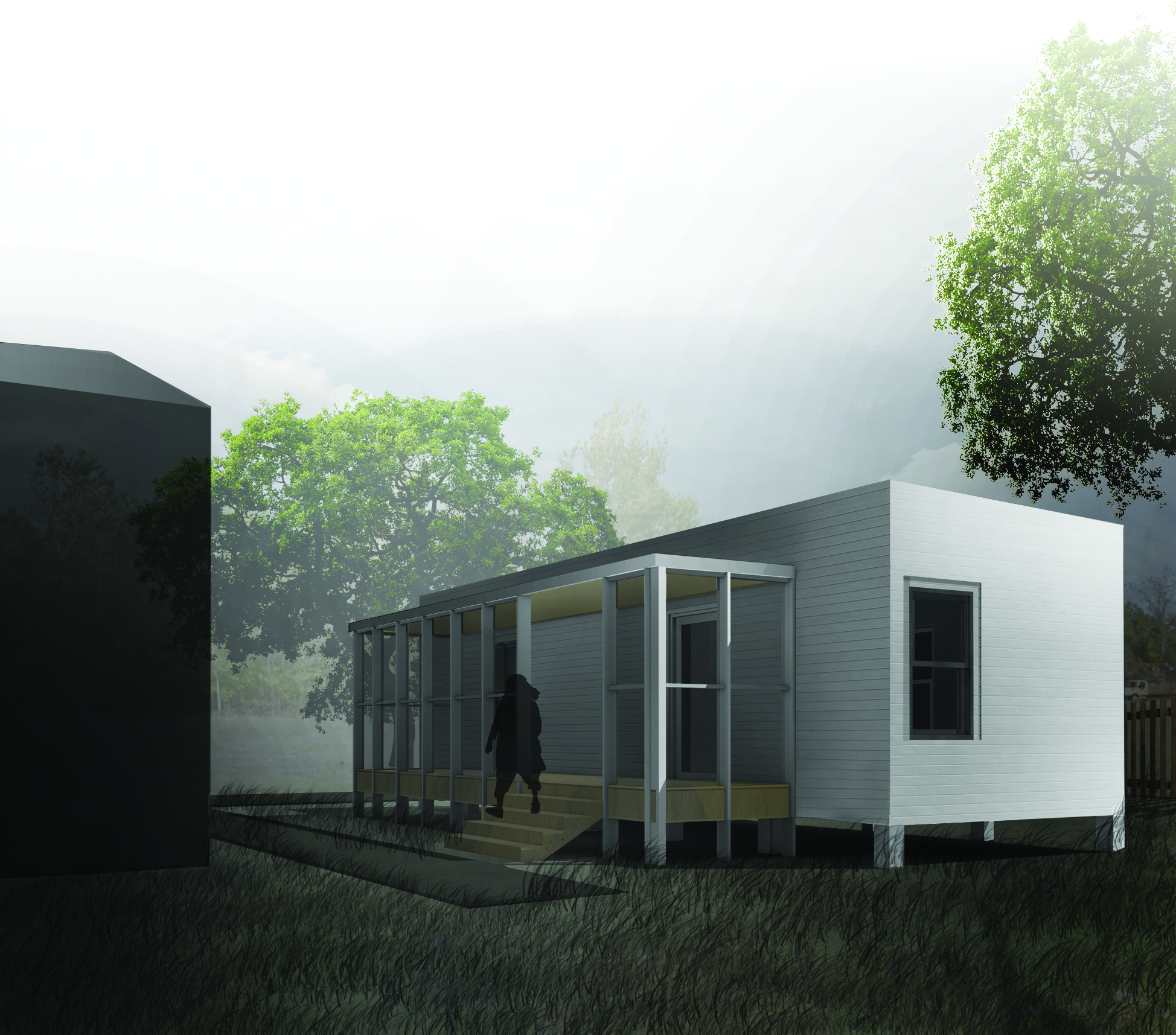

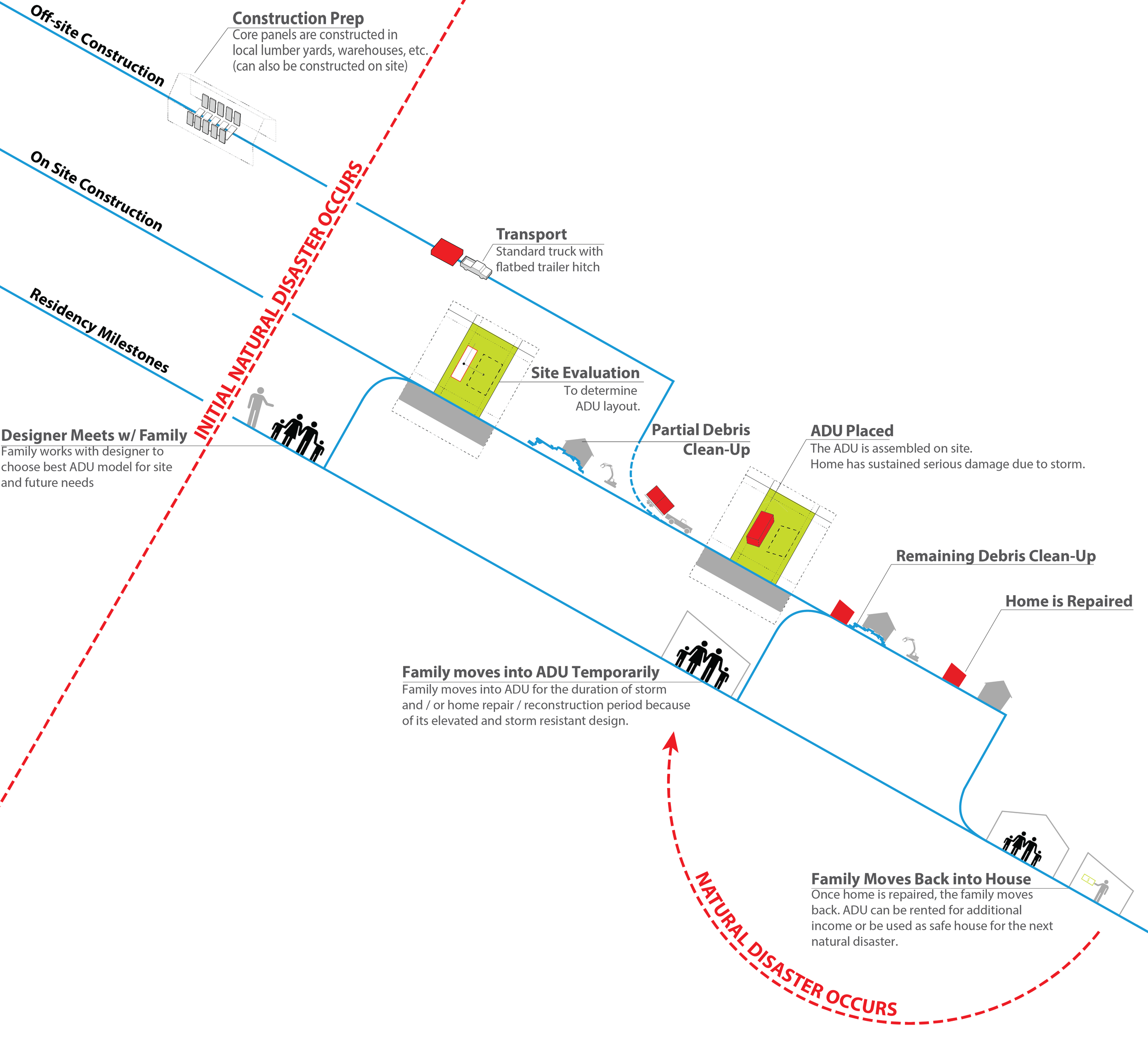


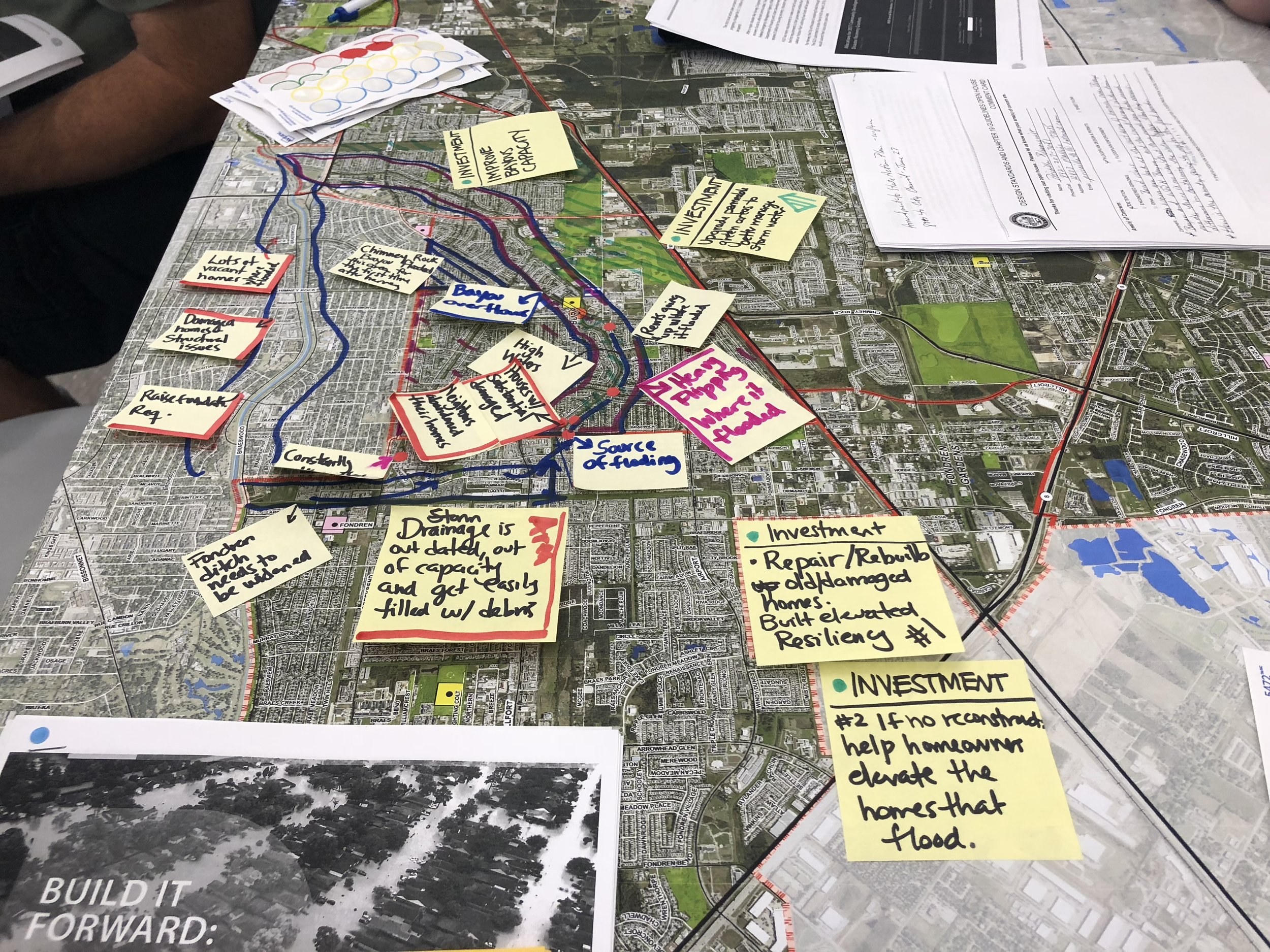

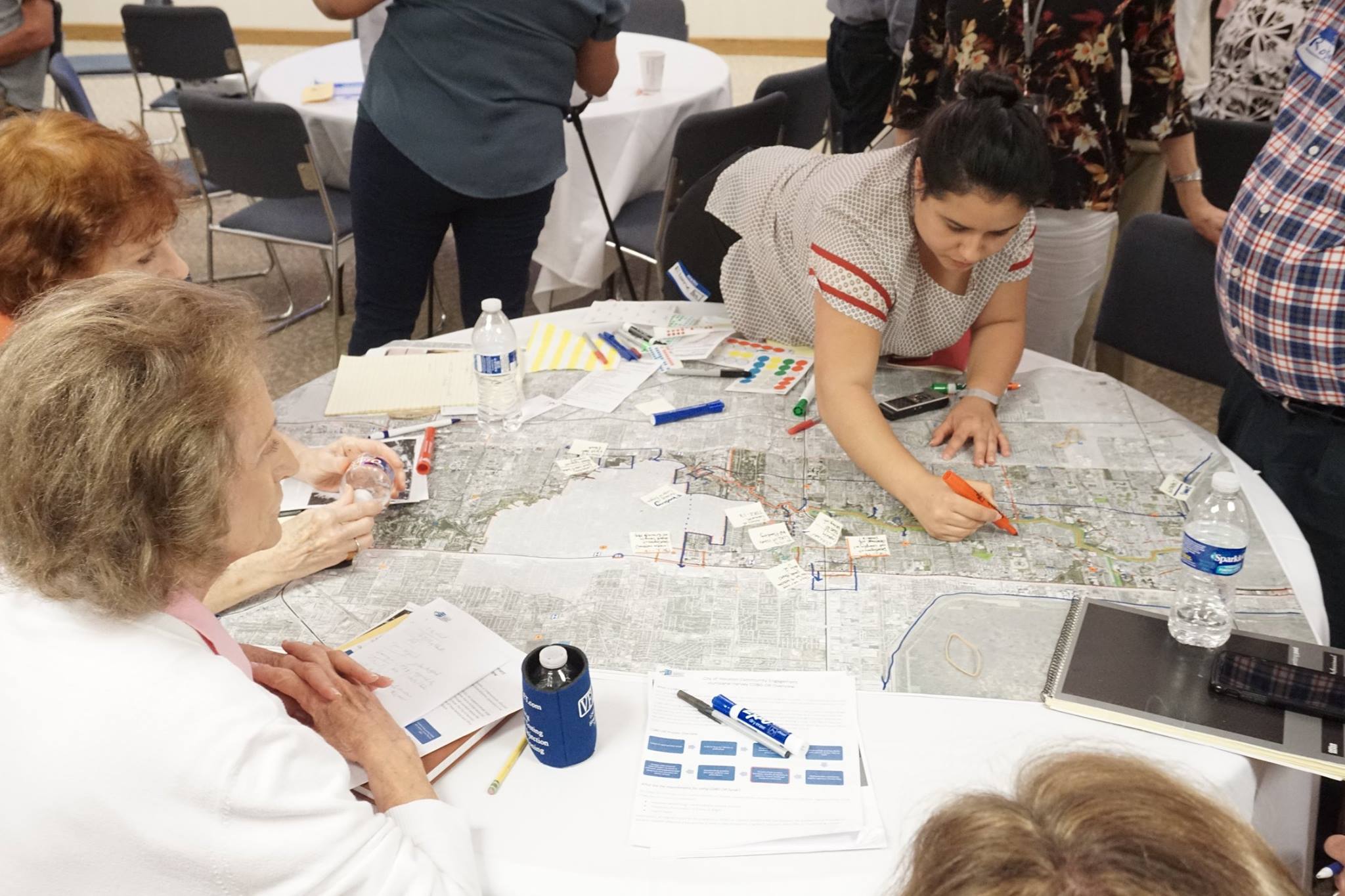



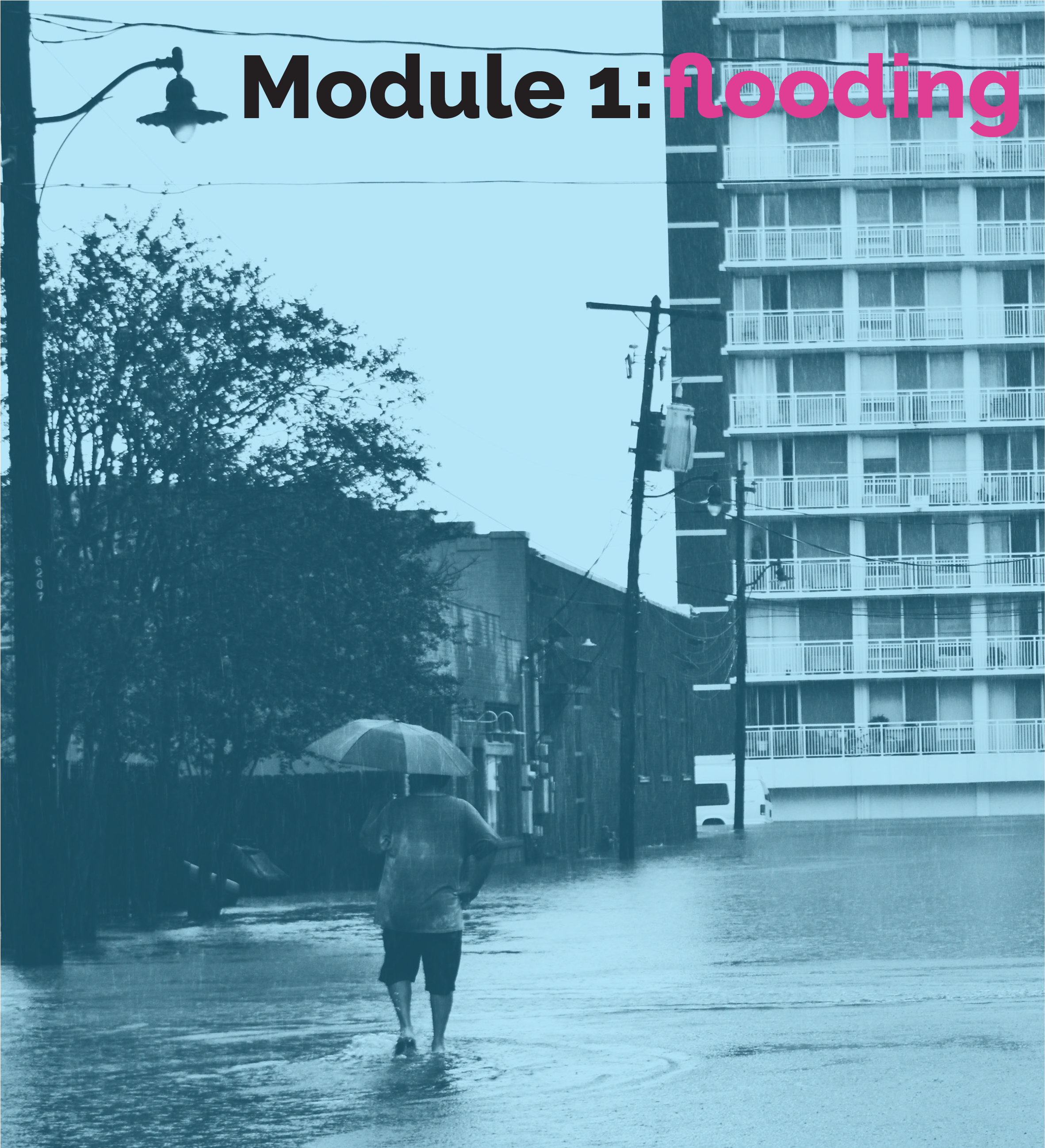
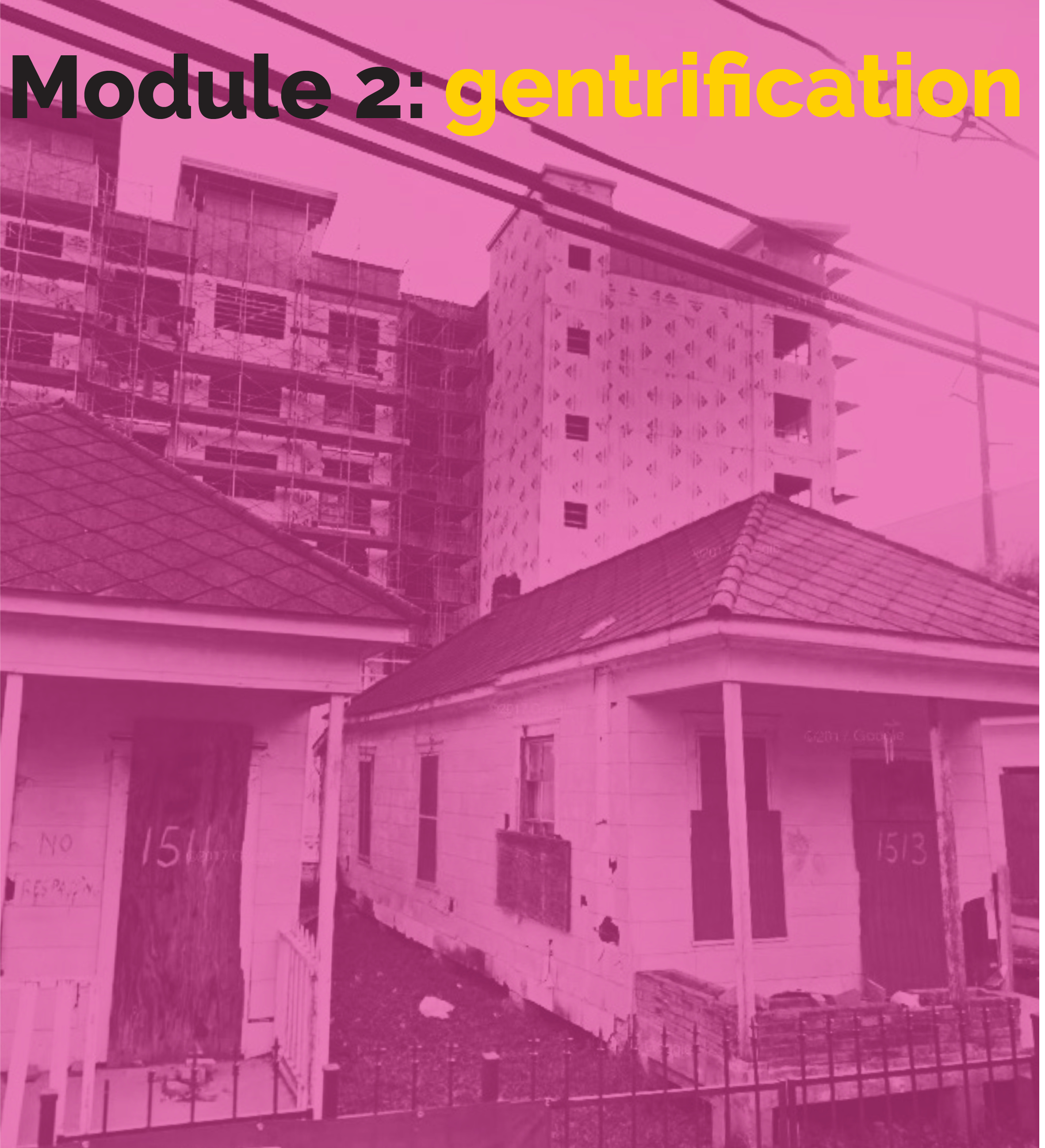
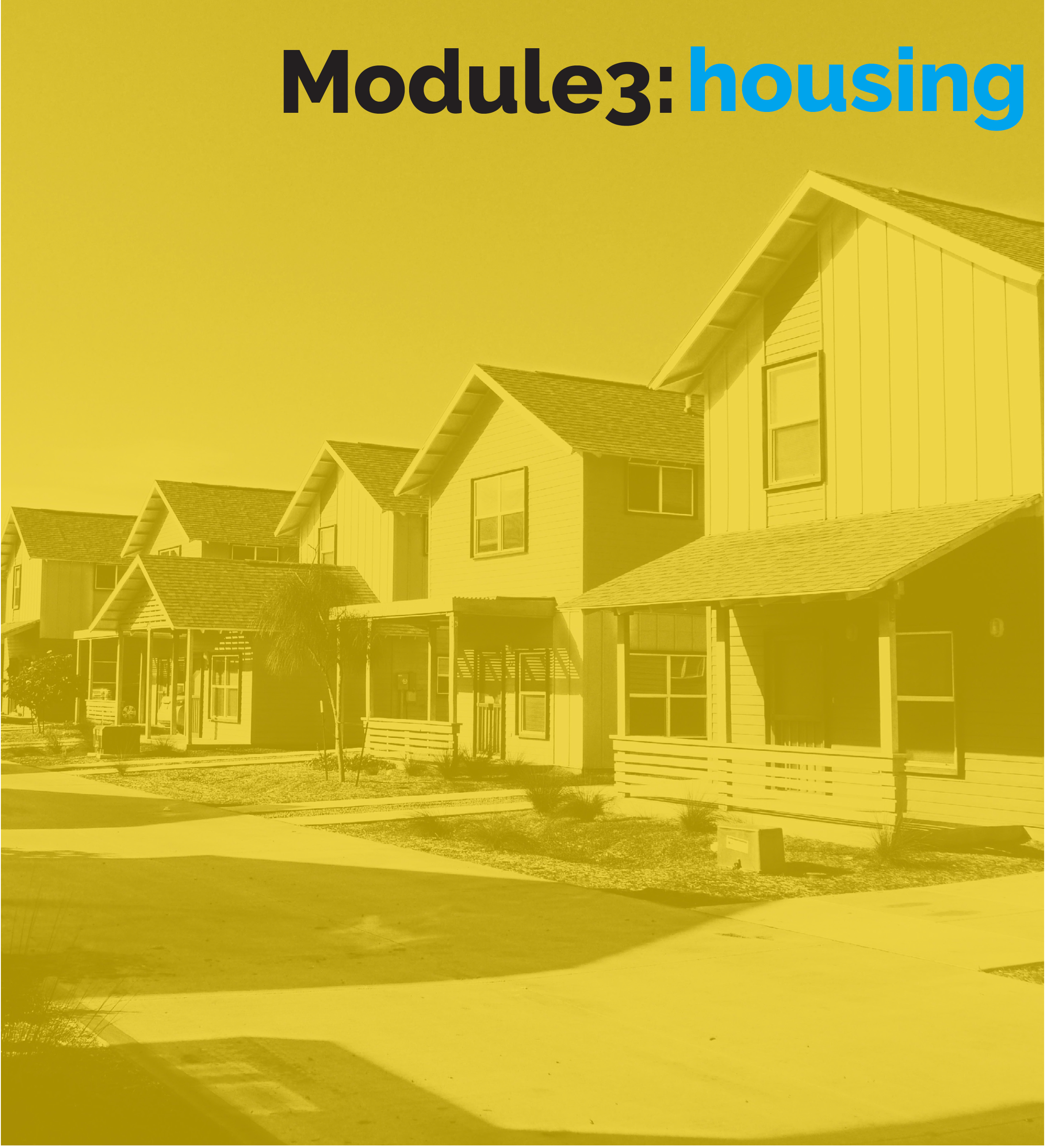
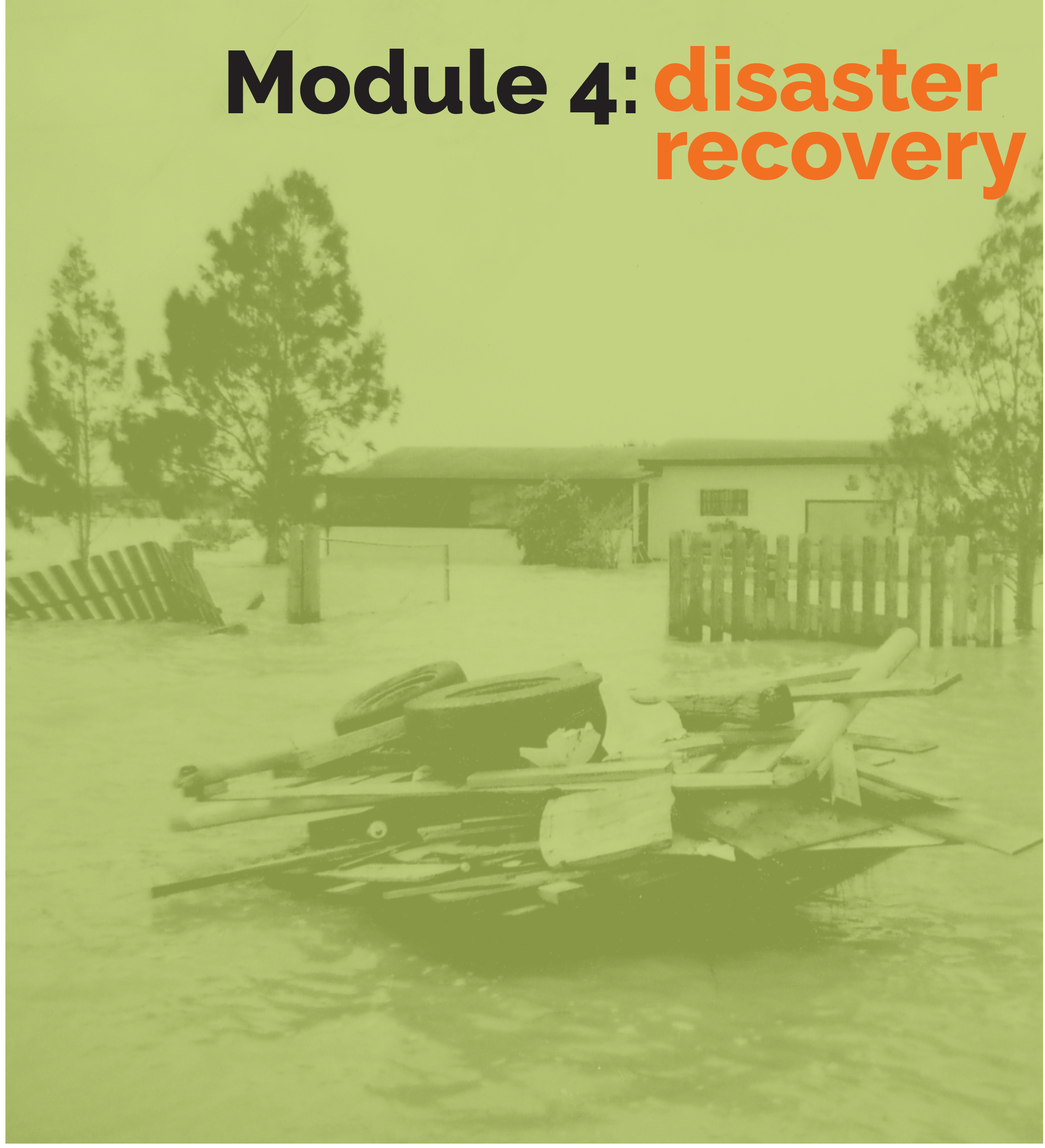






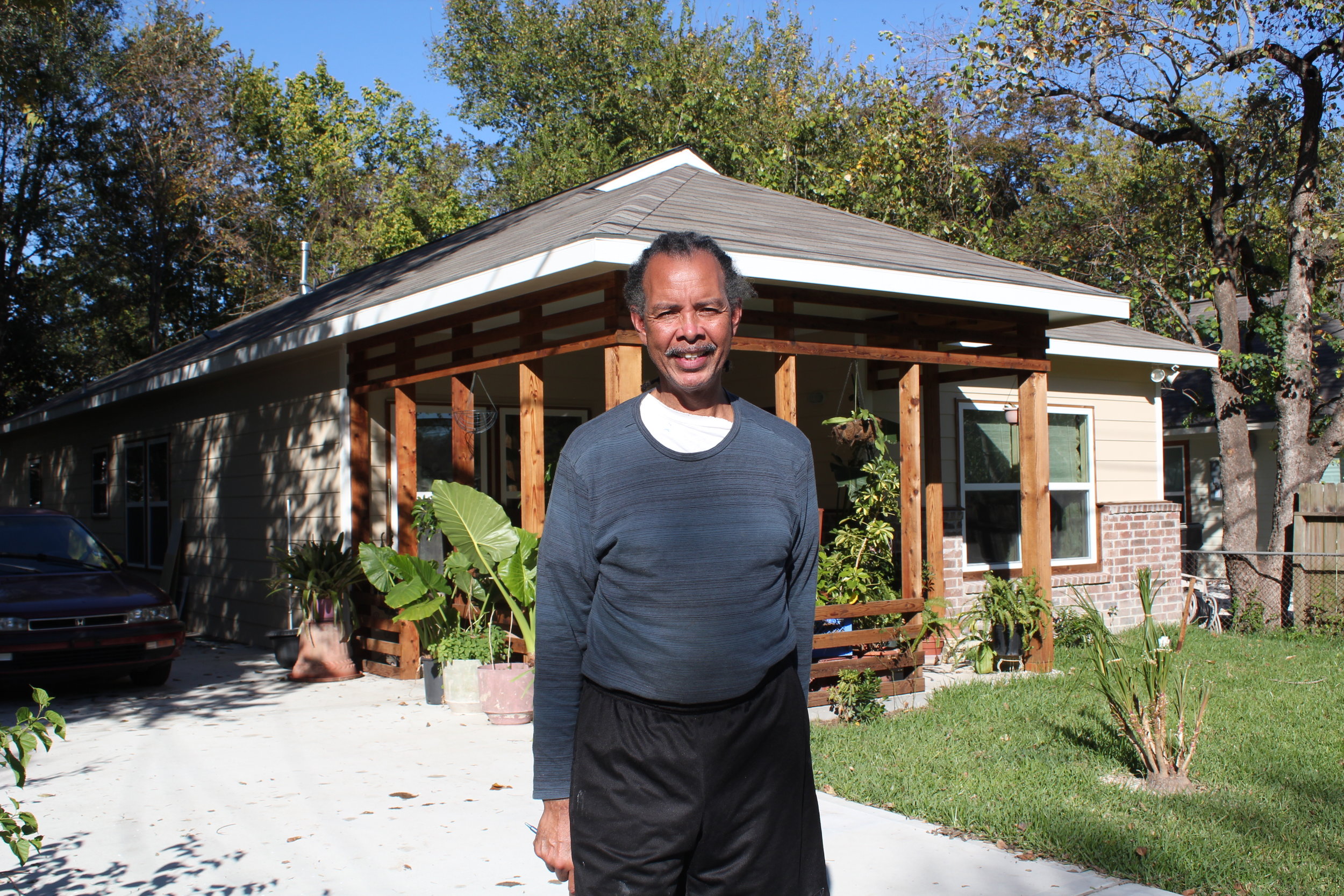
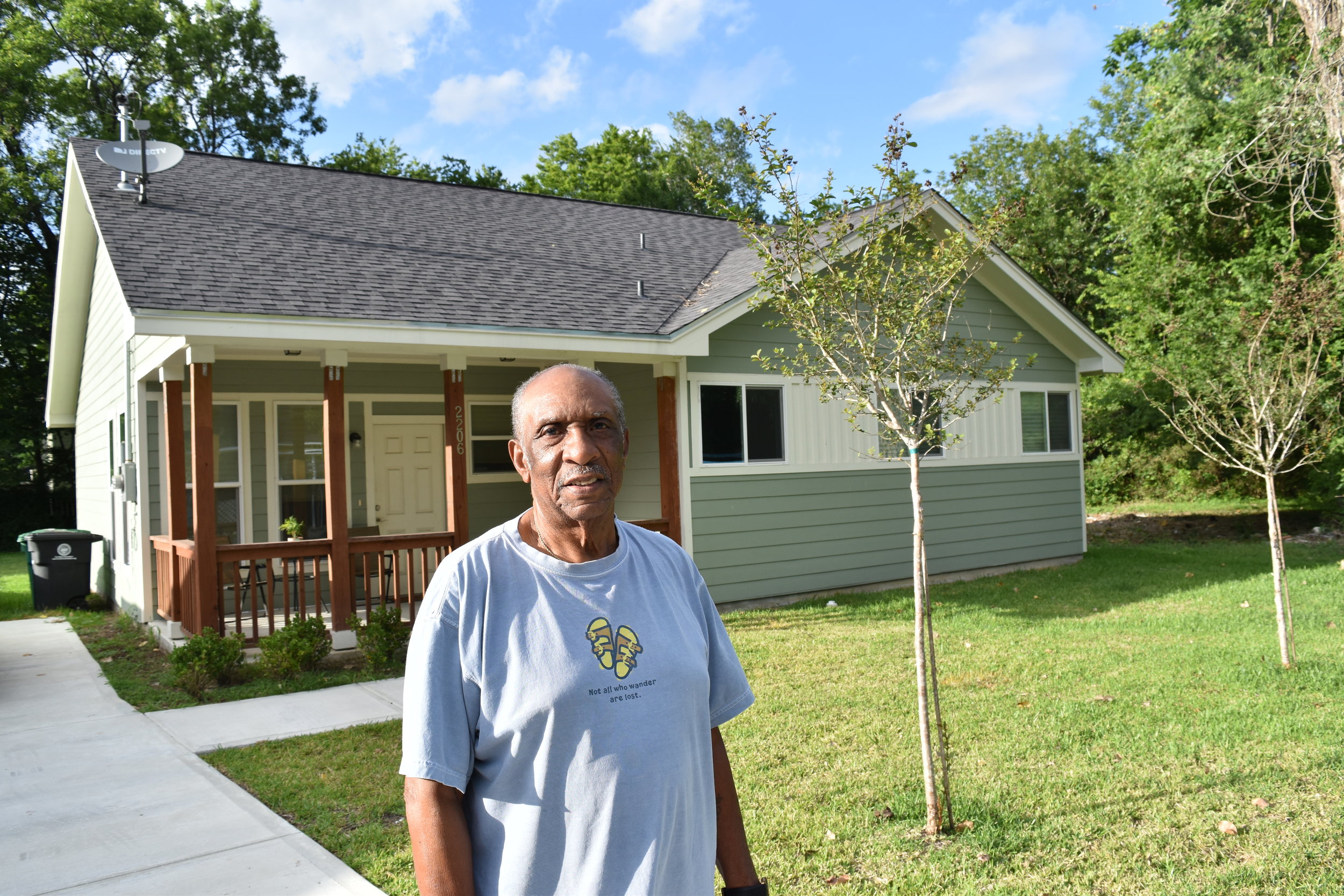
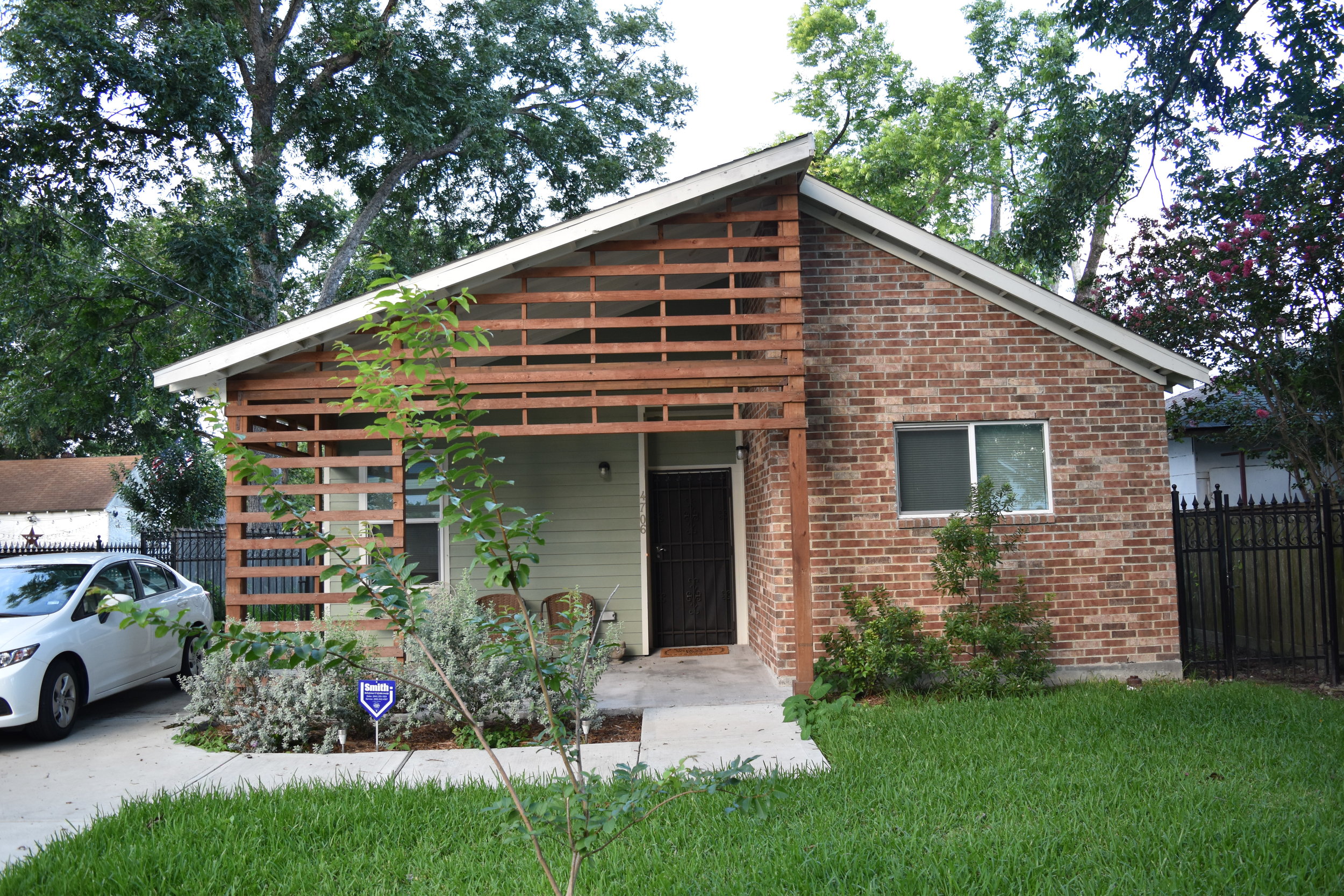
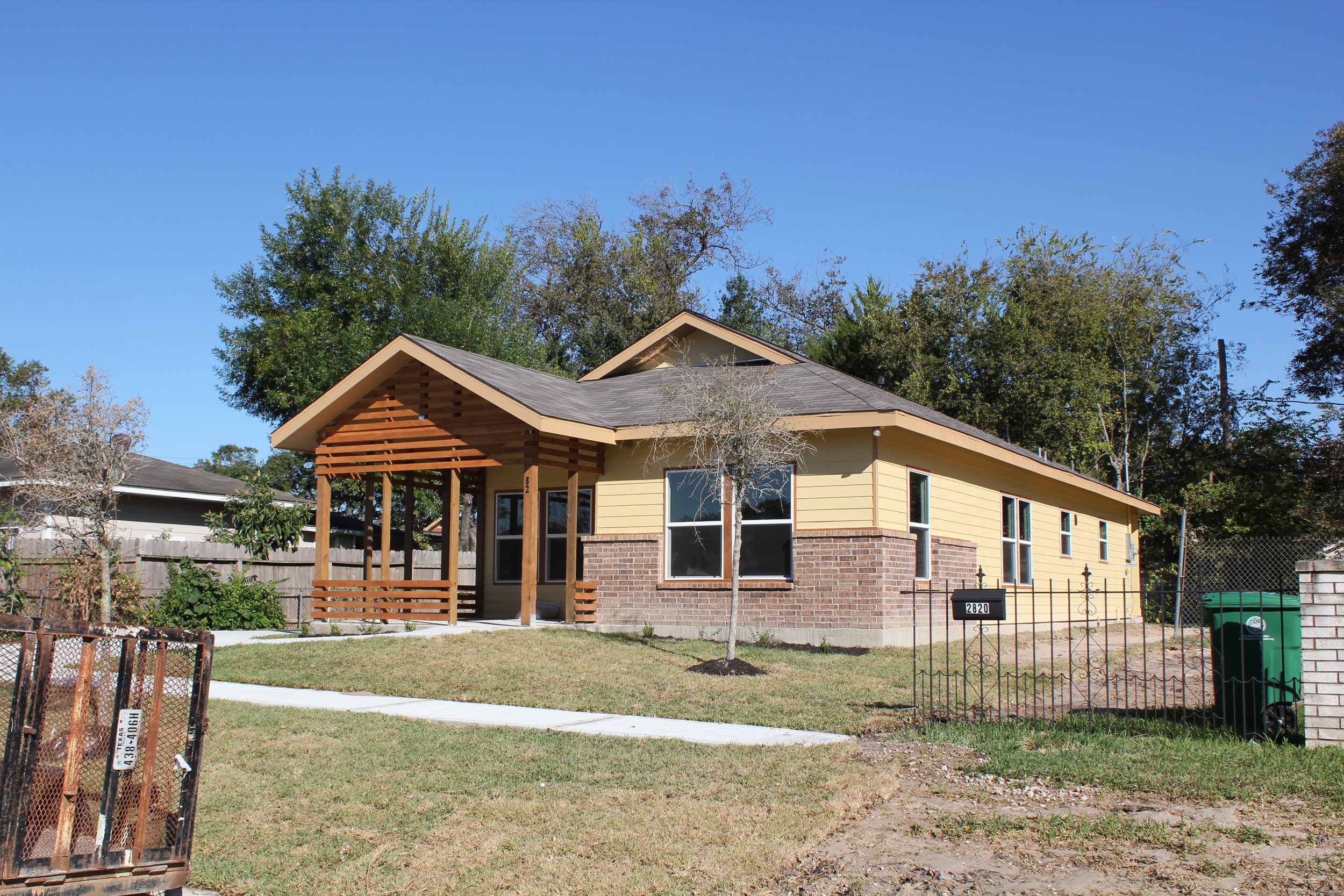
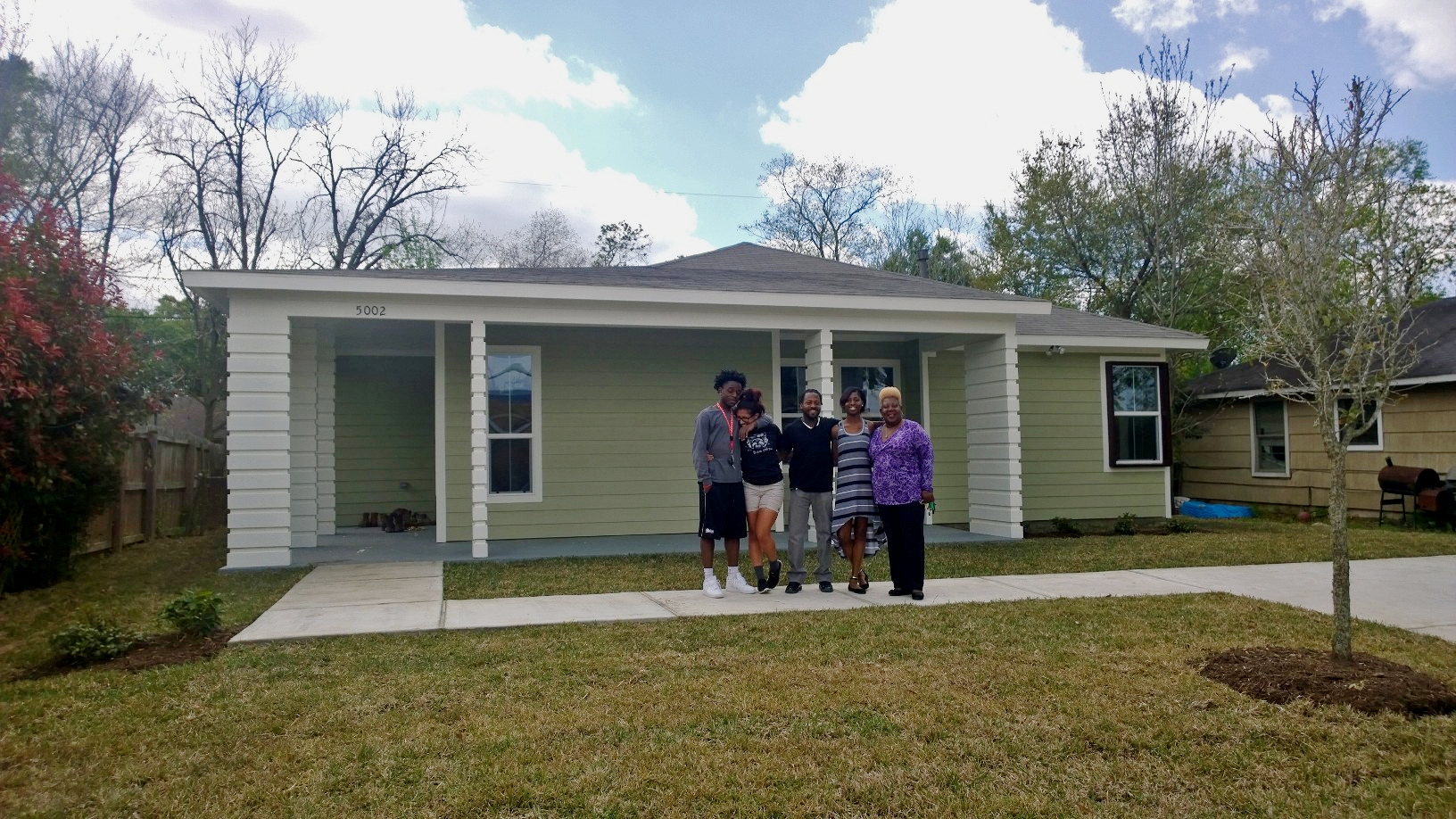

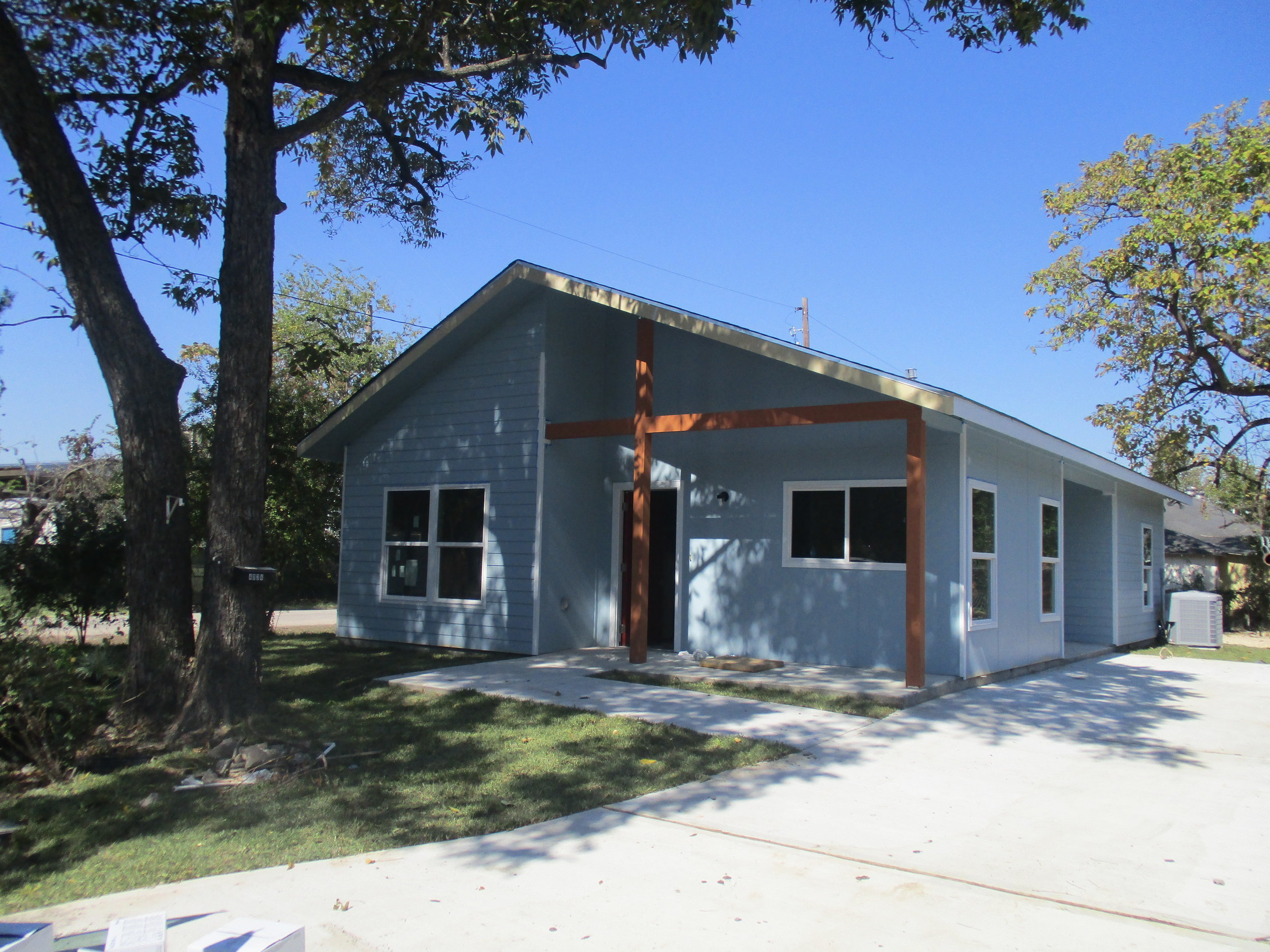
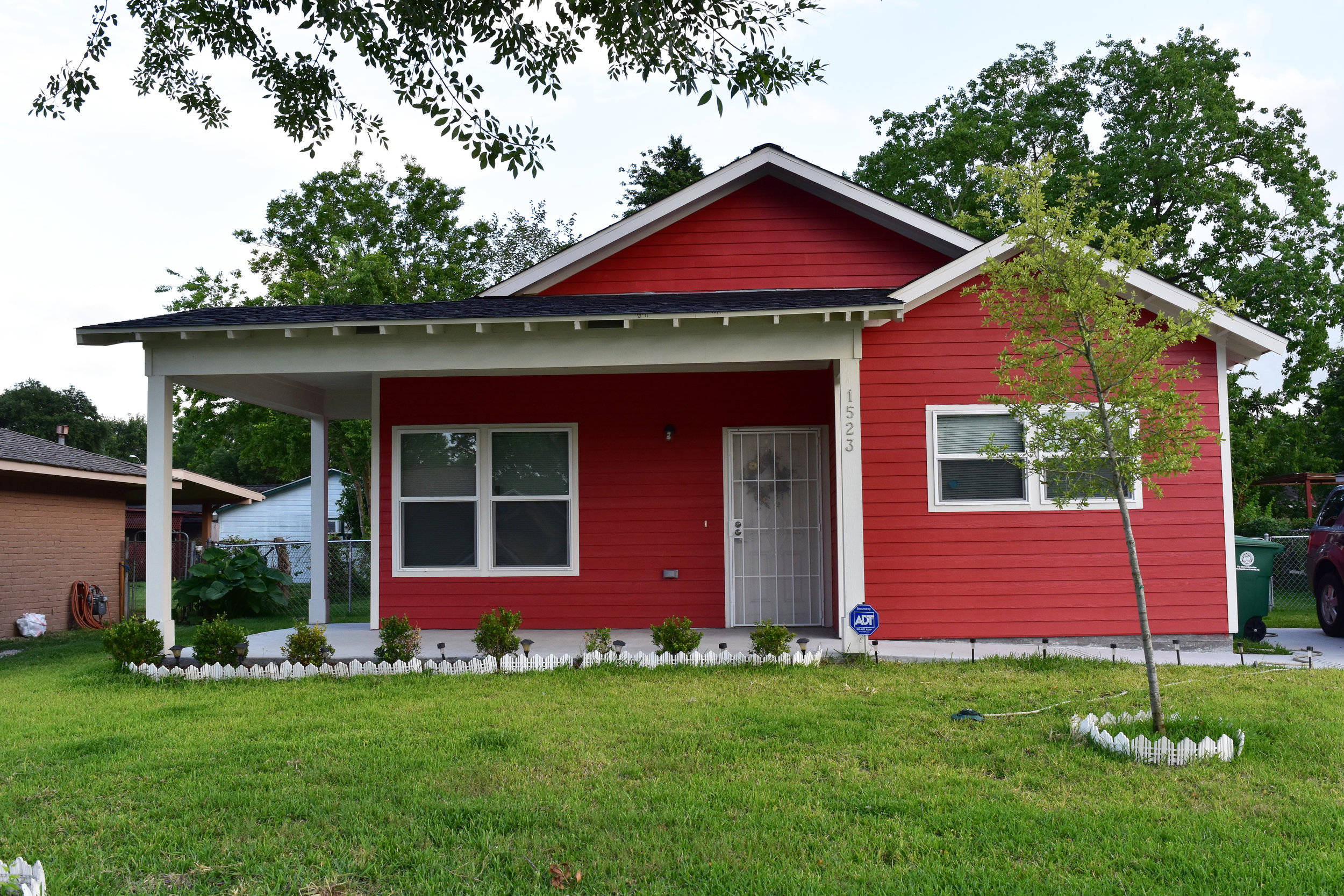
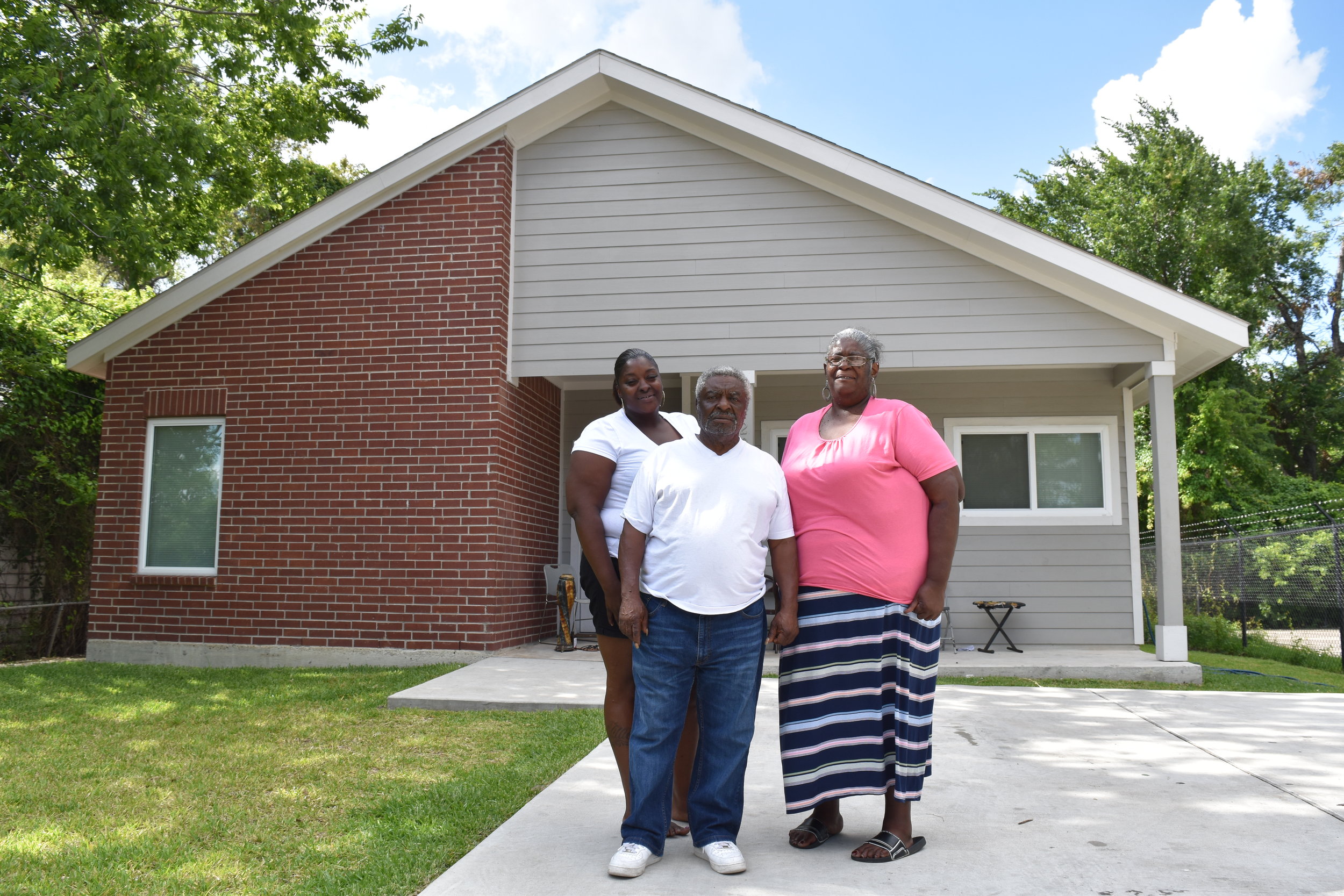
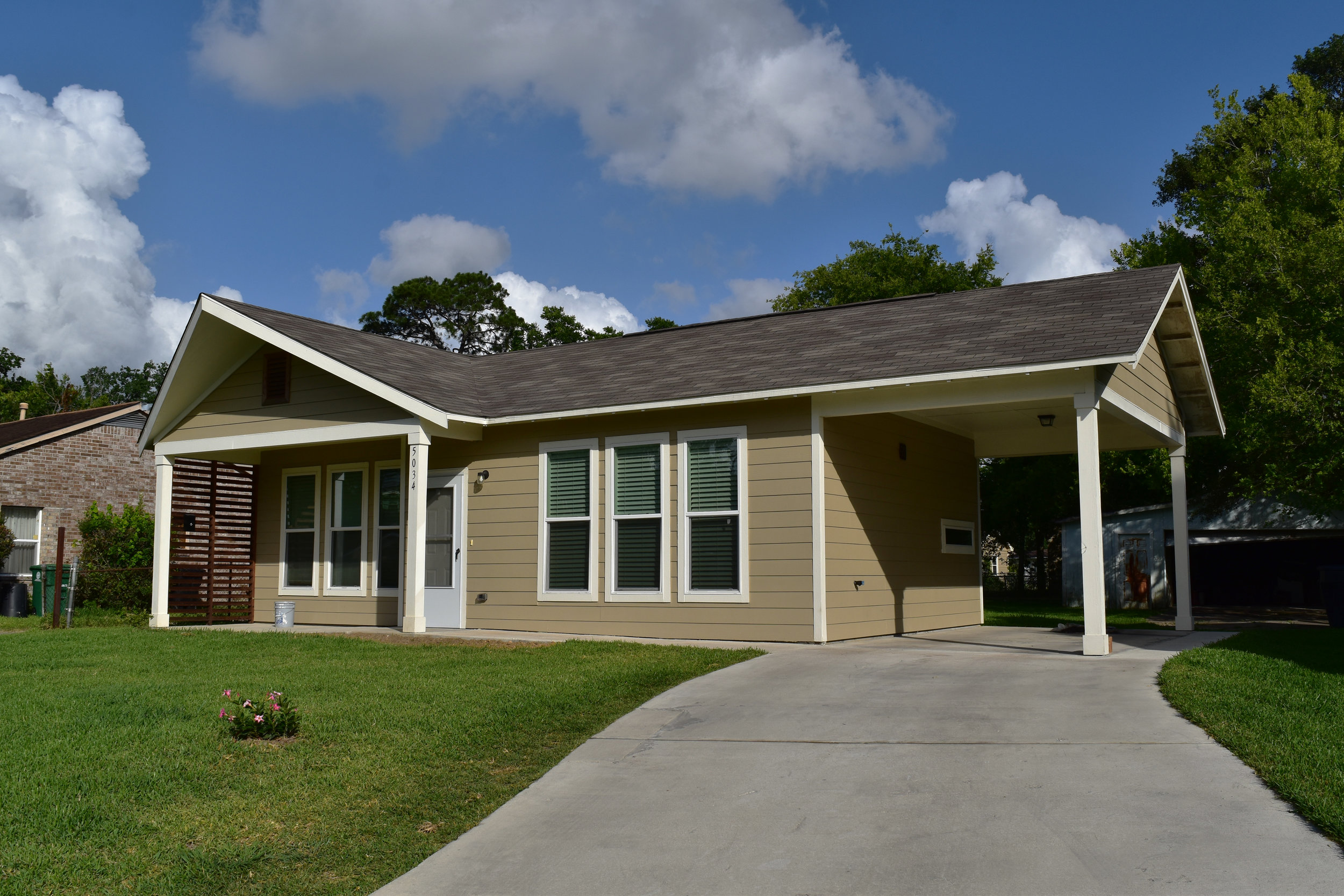
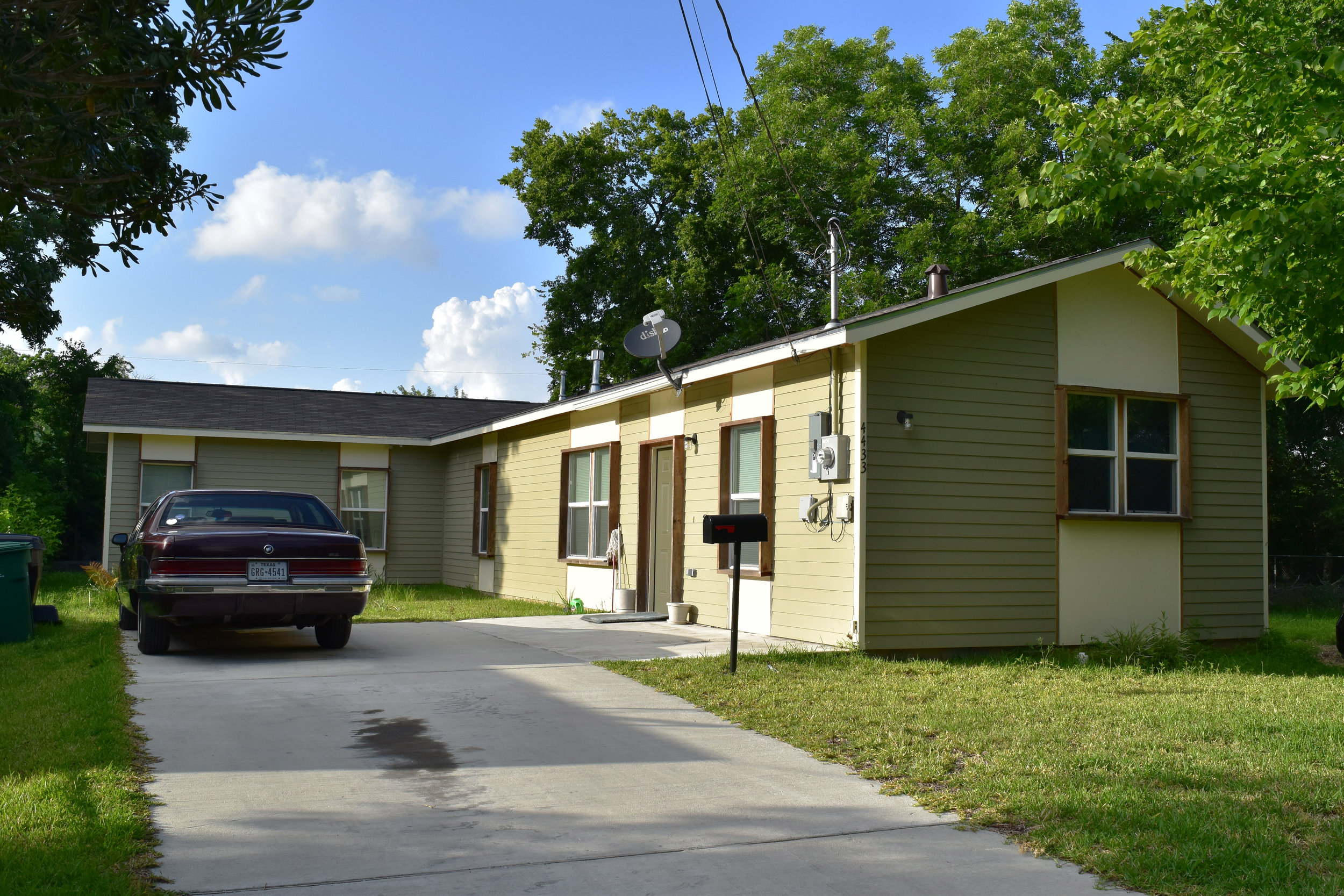
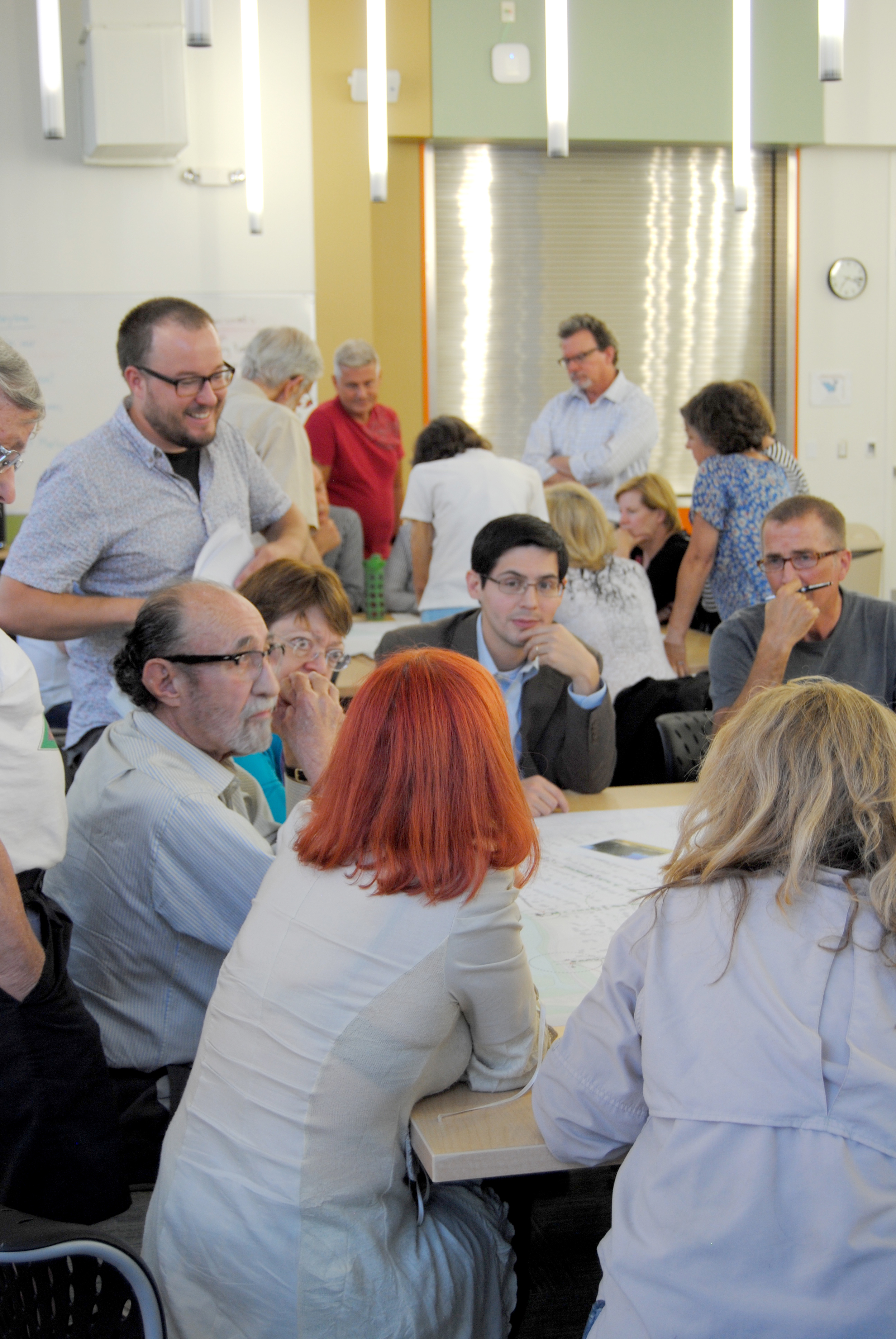






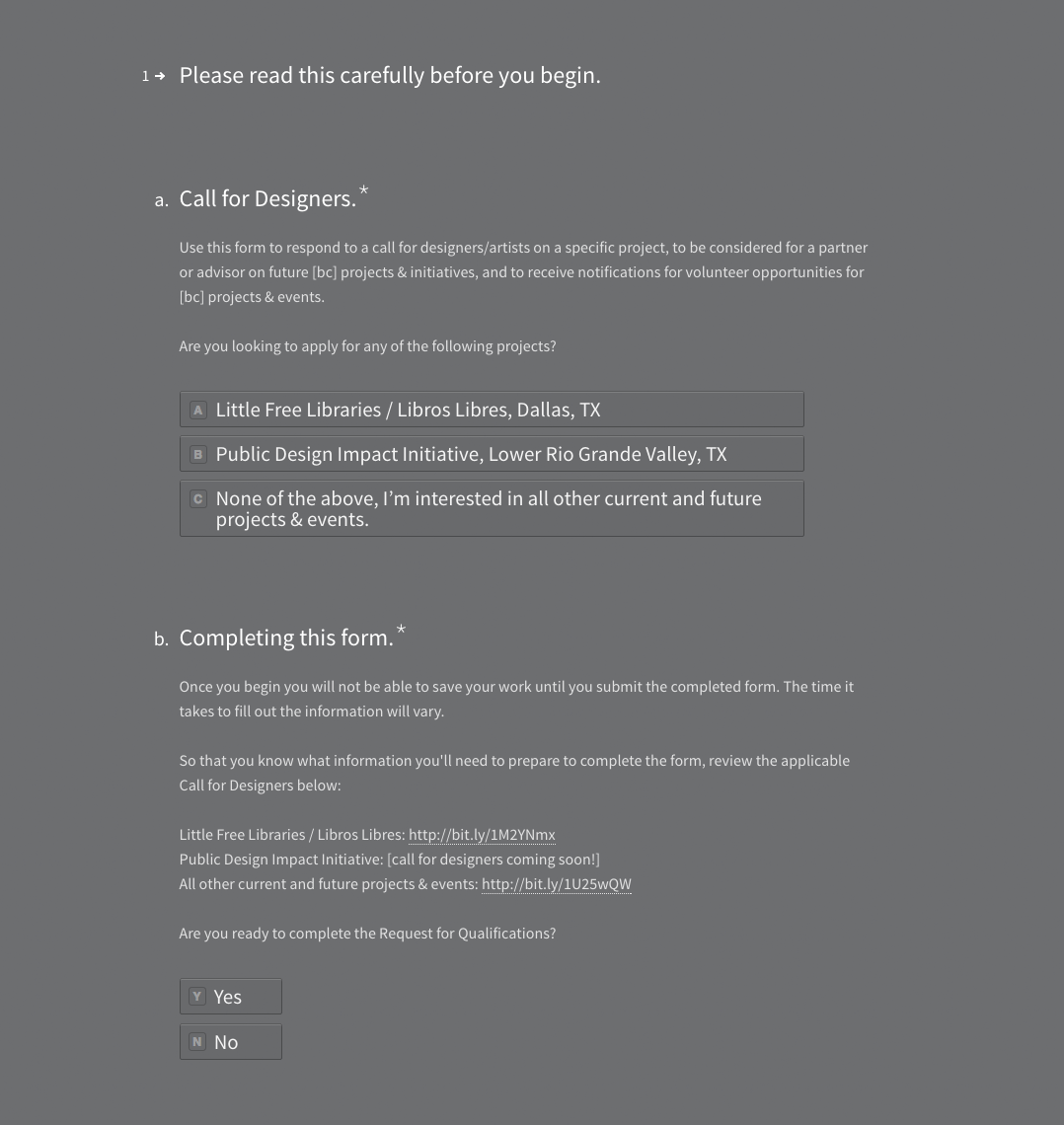













![Elaine Morales of [bc] presents on the RAPIDO project using a resiliency framework.](https://images.squarespace-cdn.com/content/v1/5248ebd5e4b0240948a6ceff/1429540065586-GX750RGCCERH49KXHW55/SFI1+copy.jpg)






